


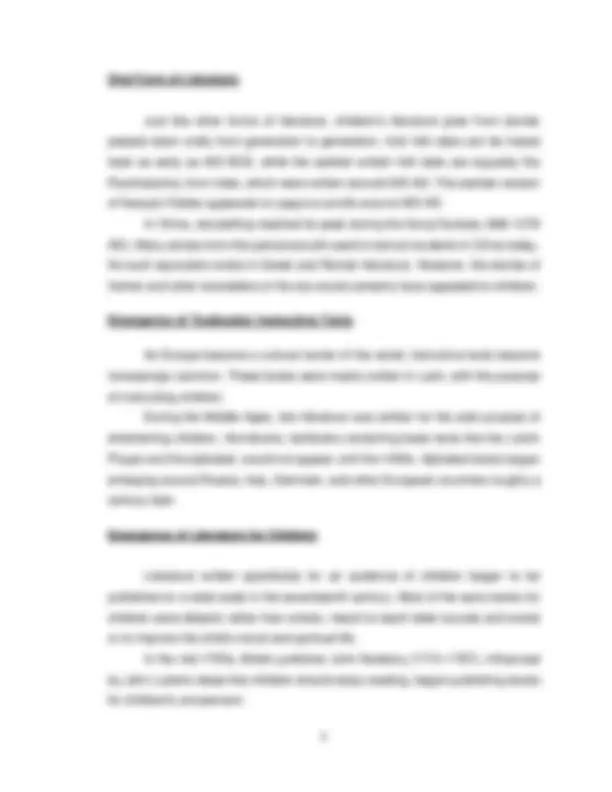
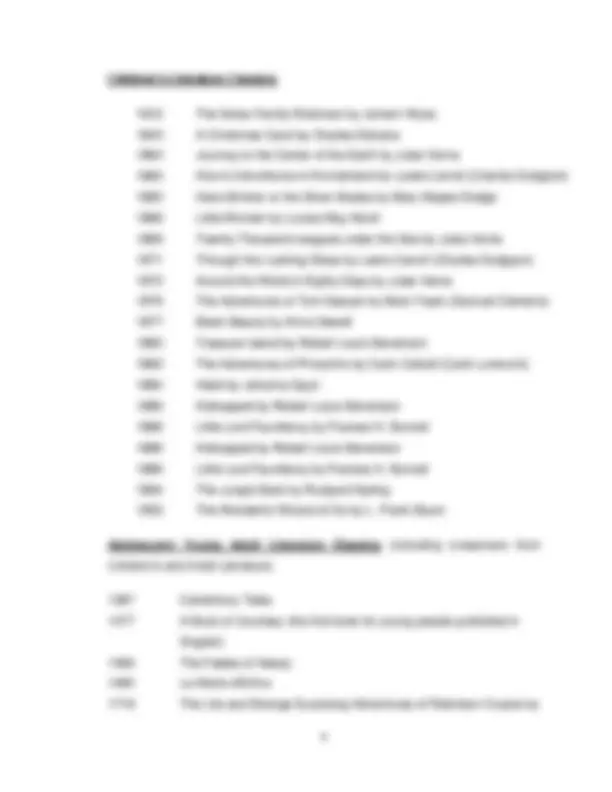


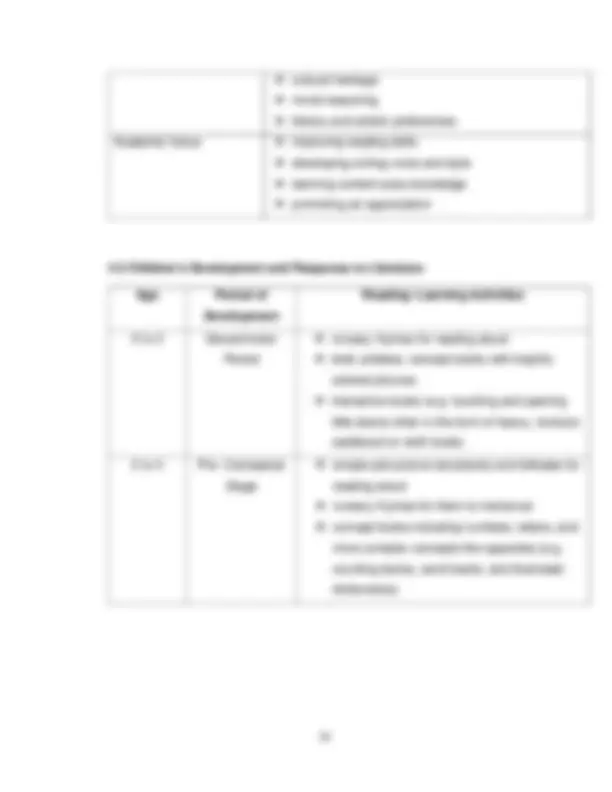
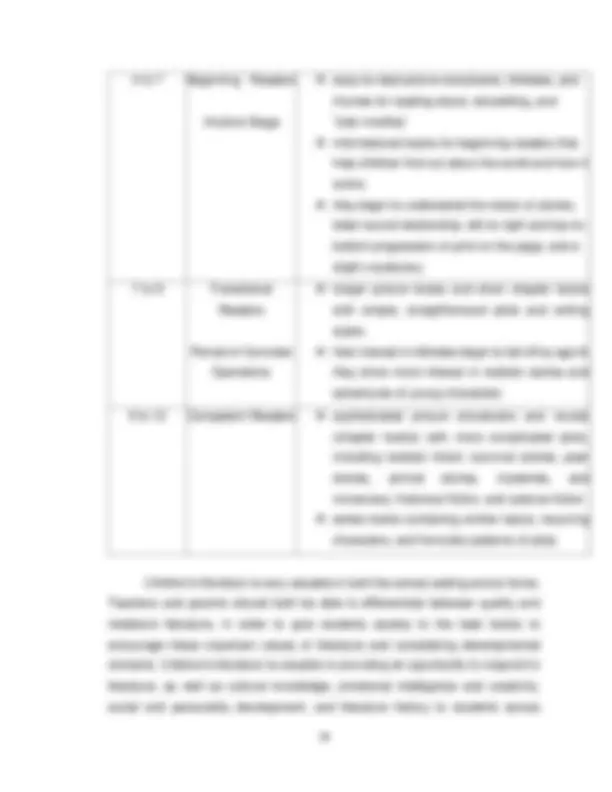

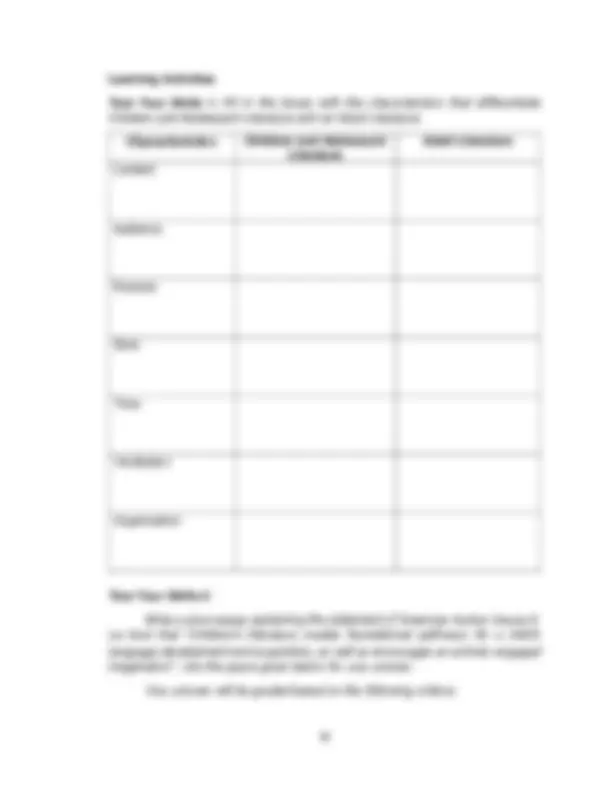
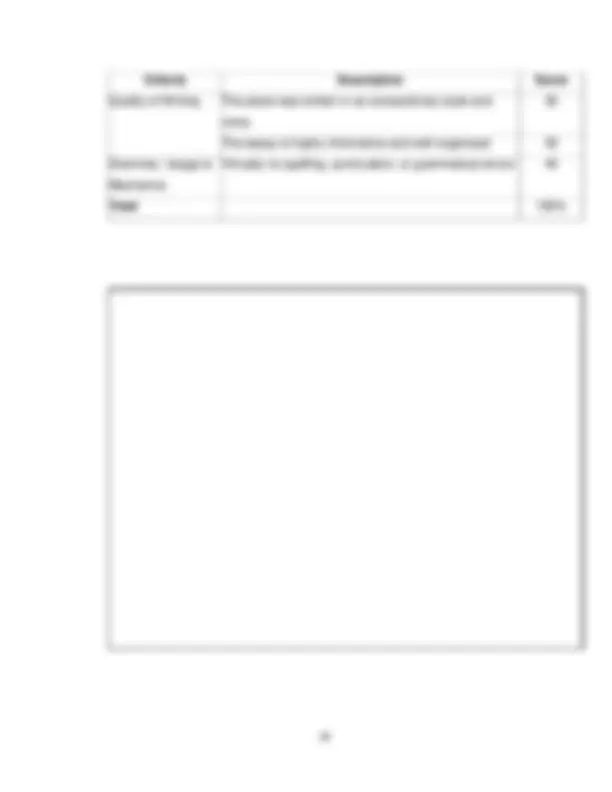
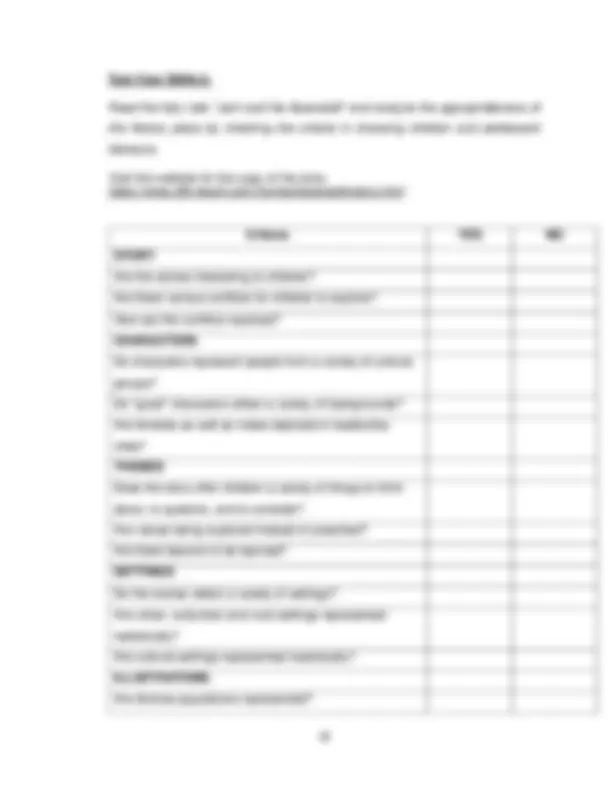
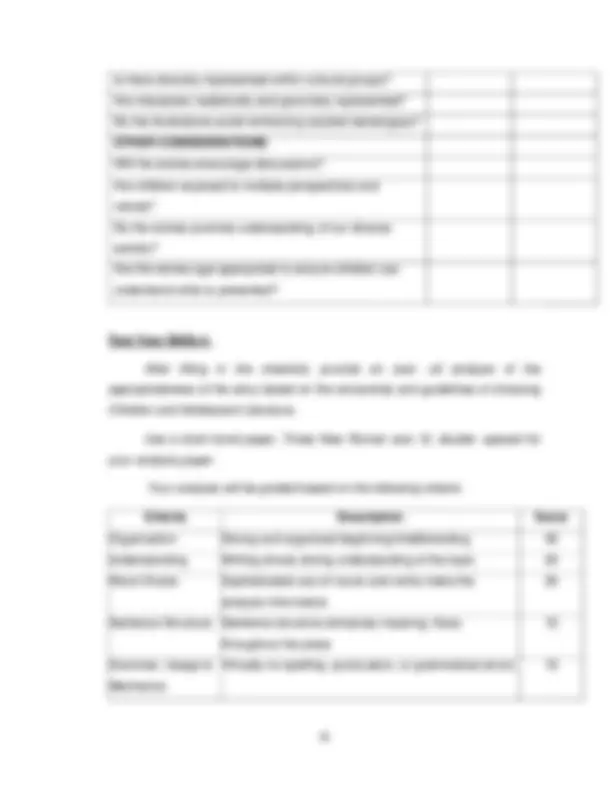
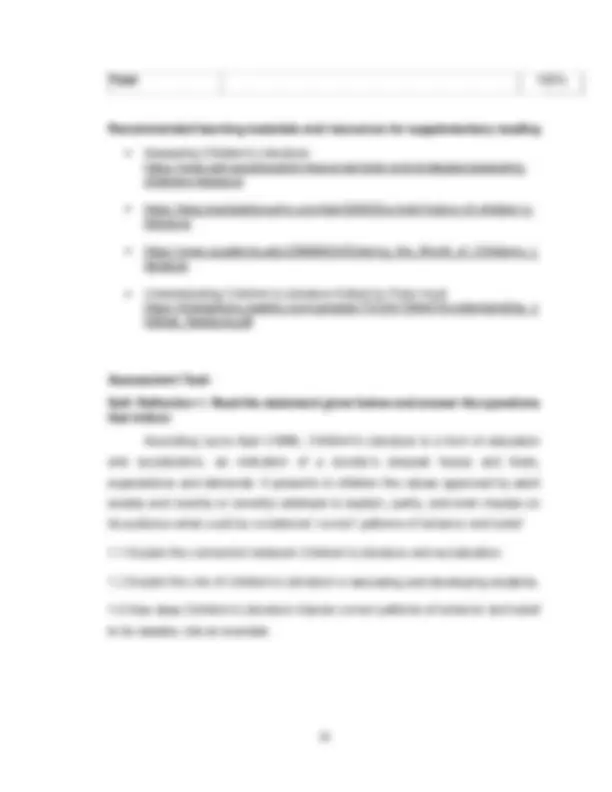
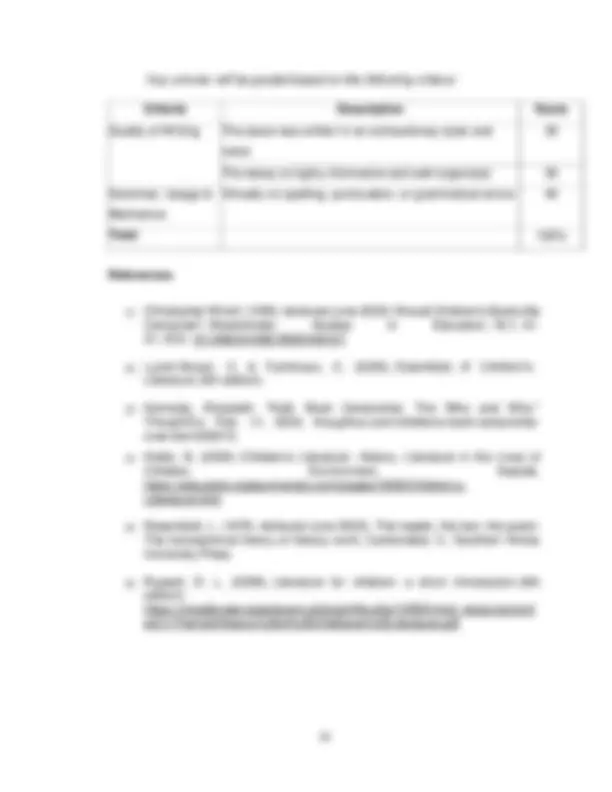
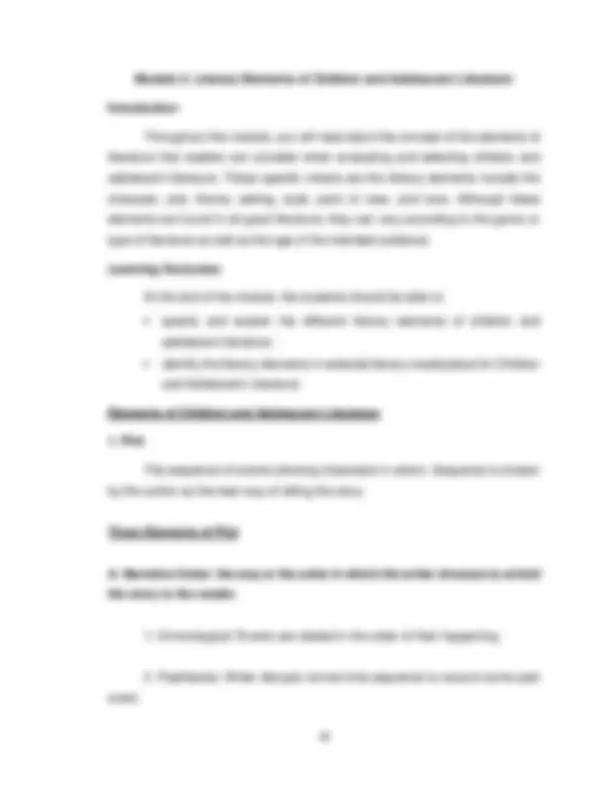
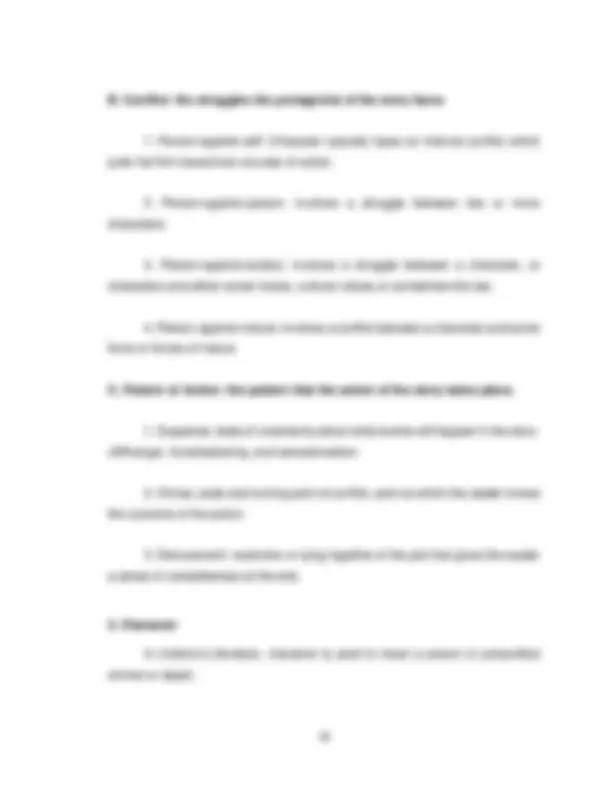
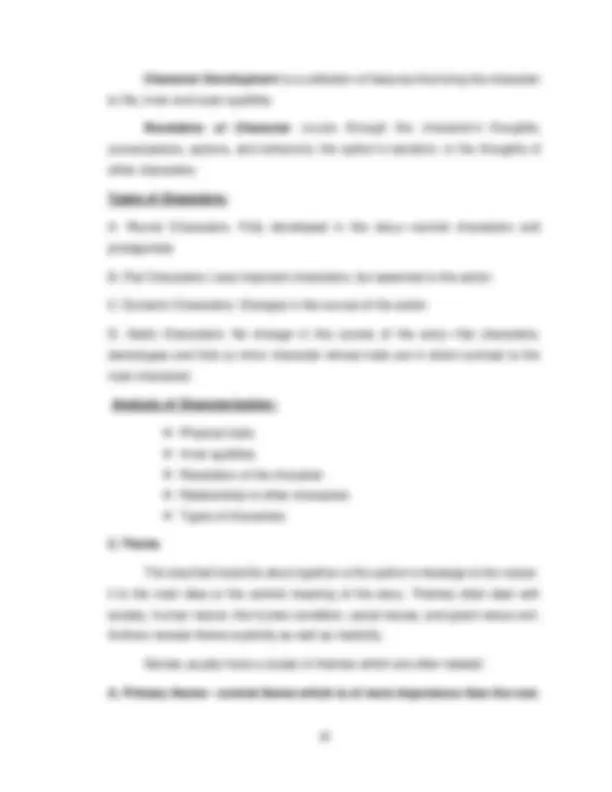
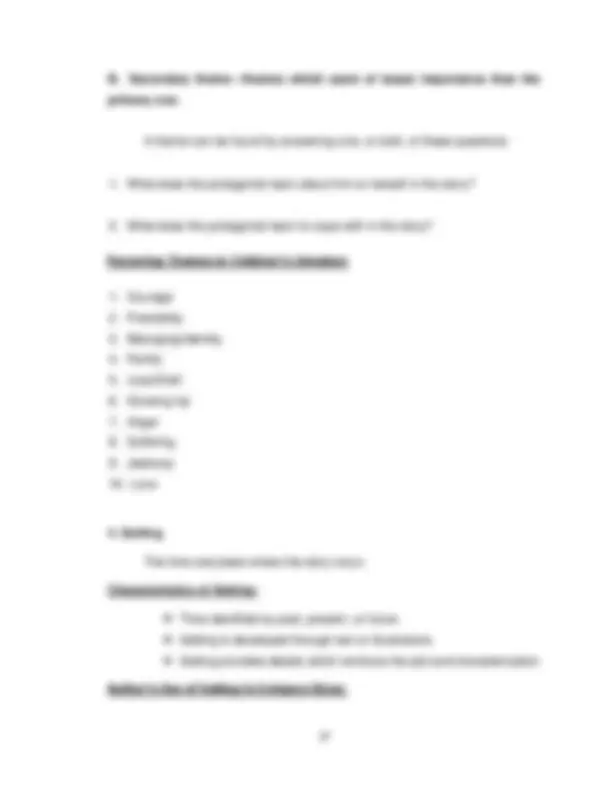

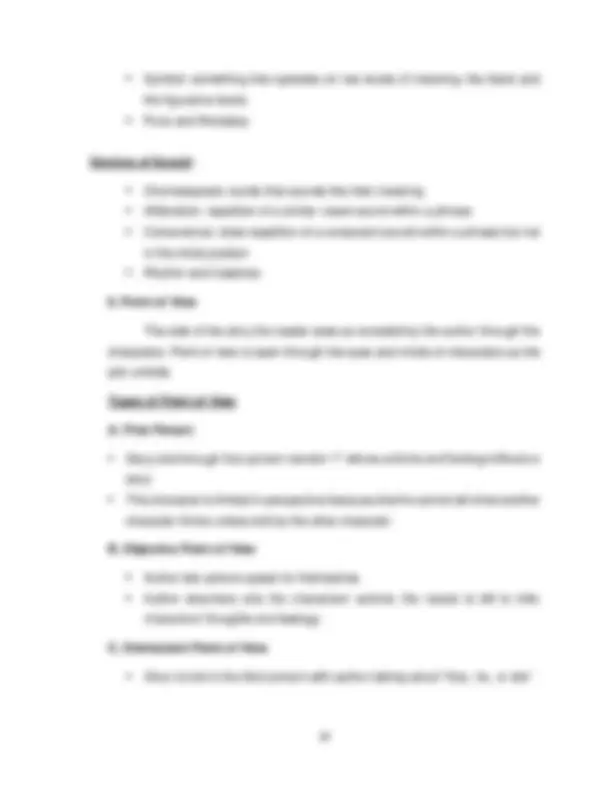
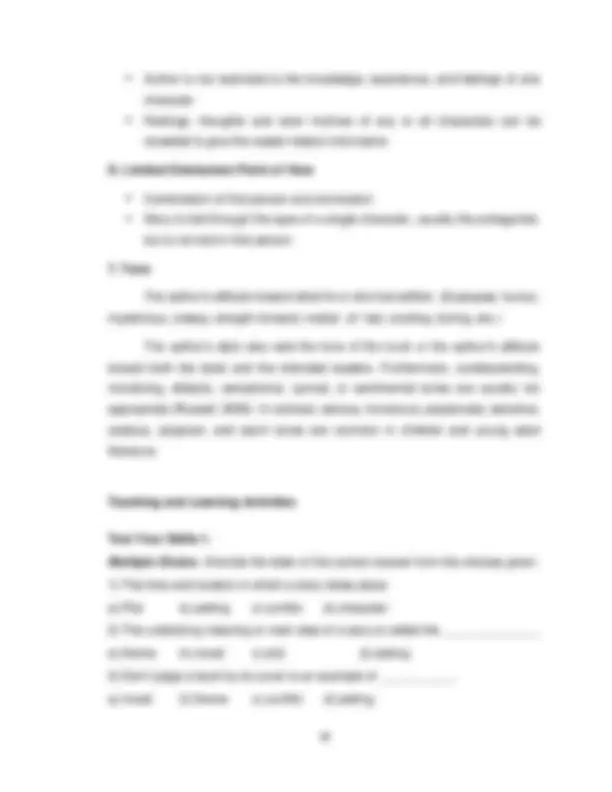
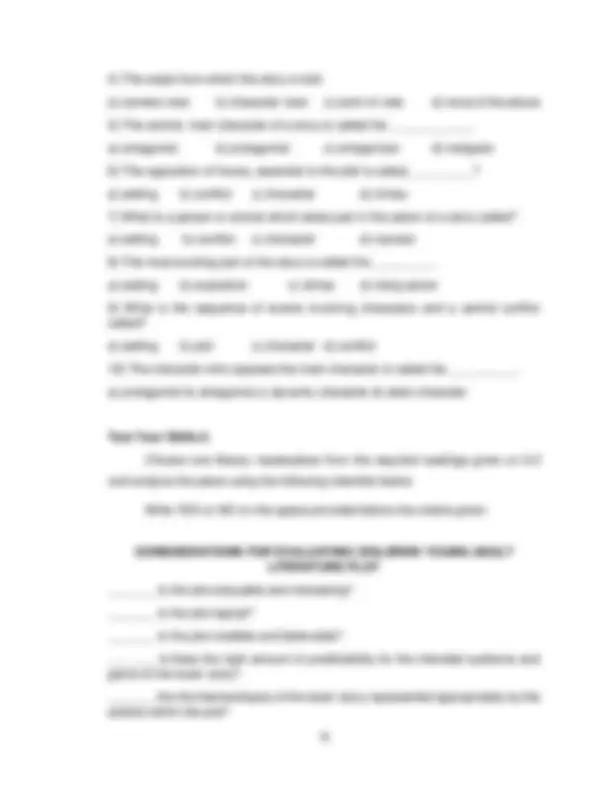
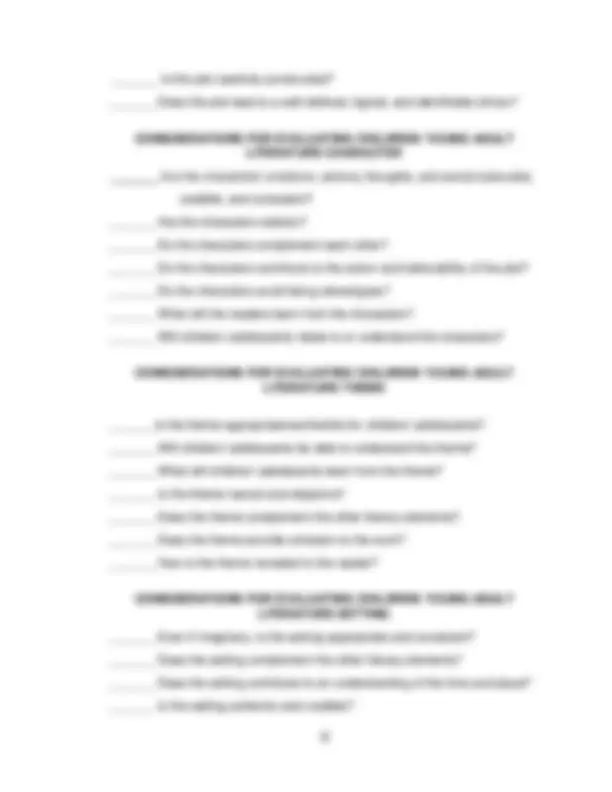
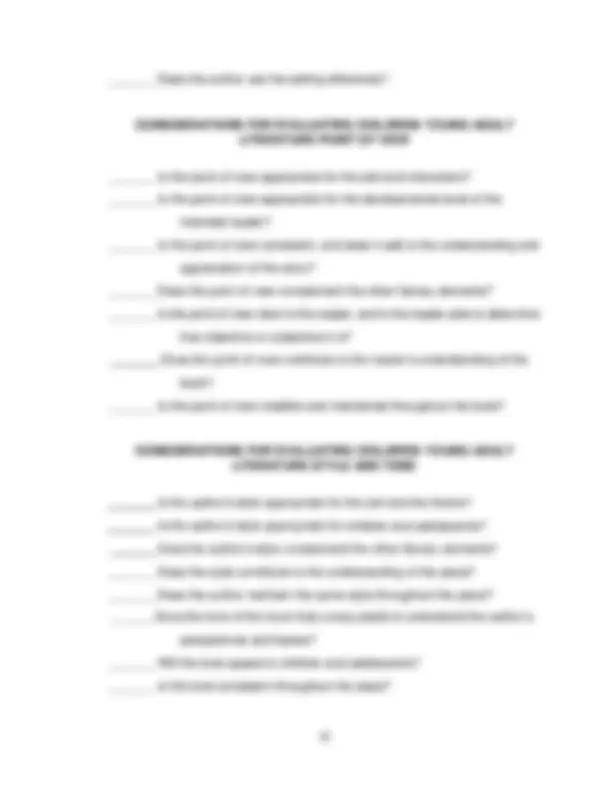
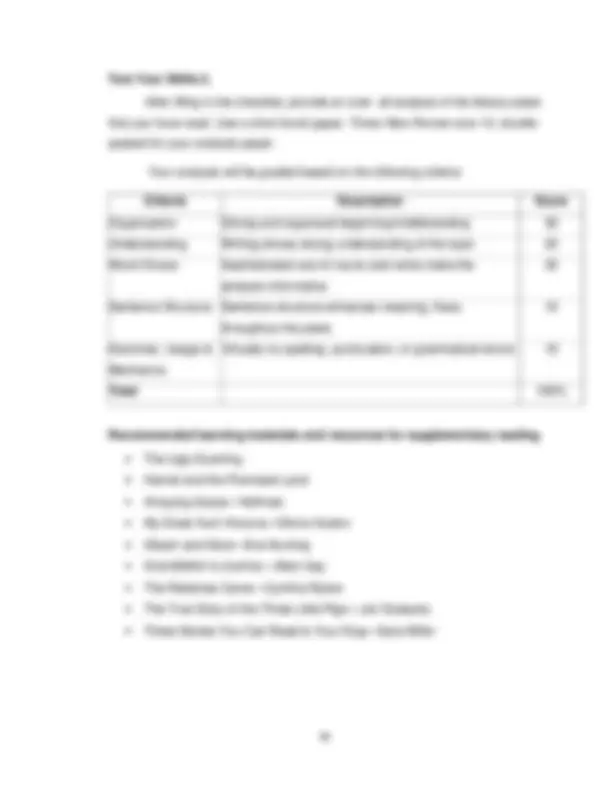
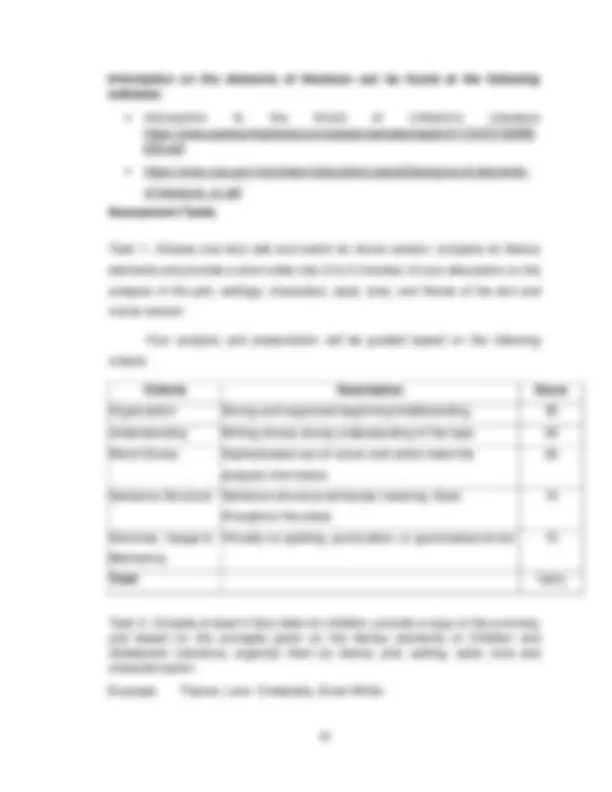

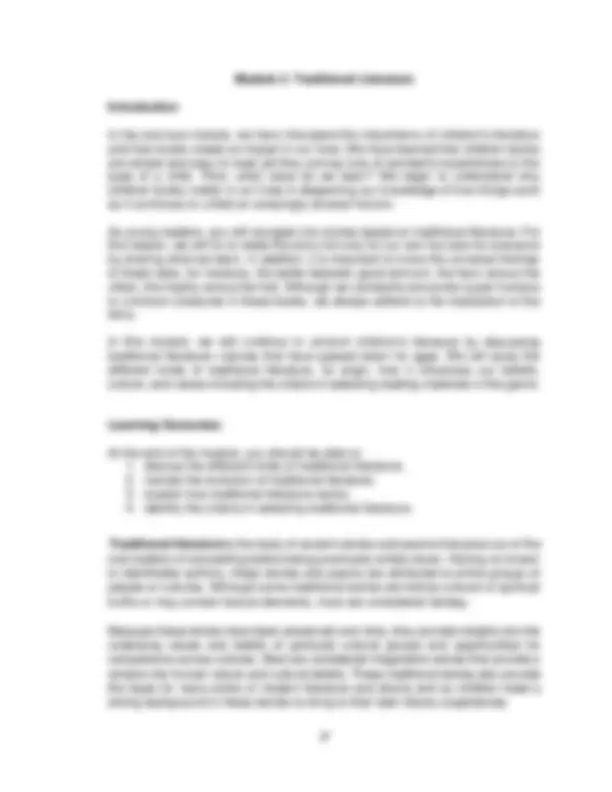
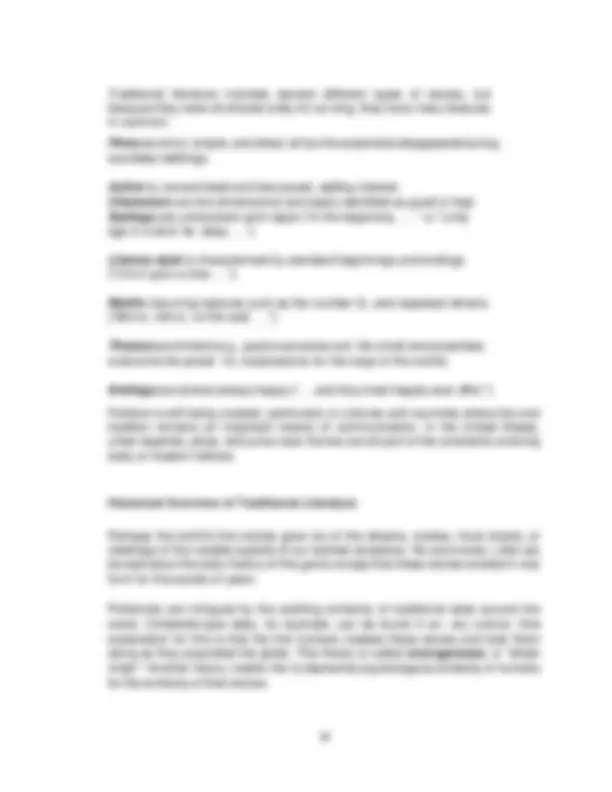
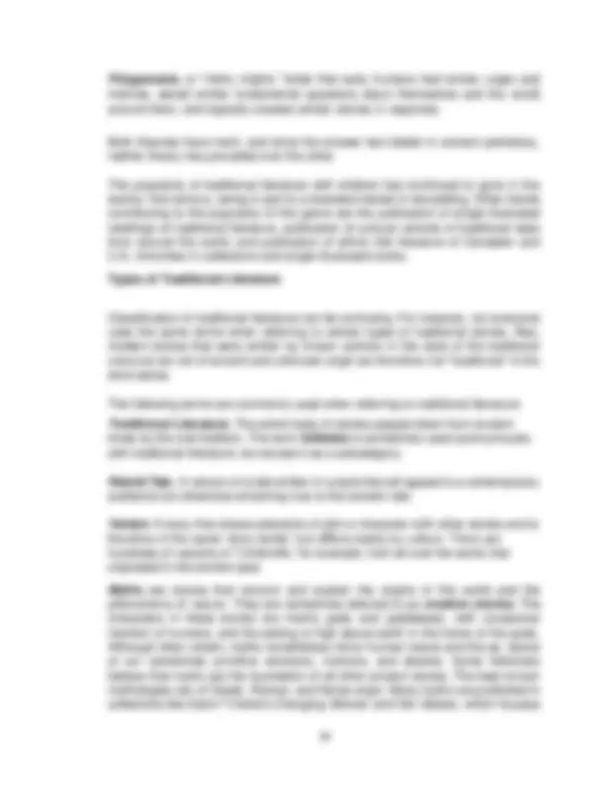

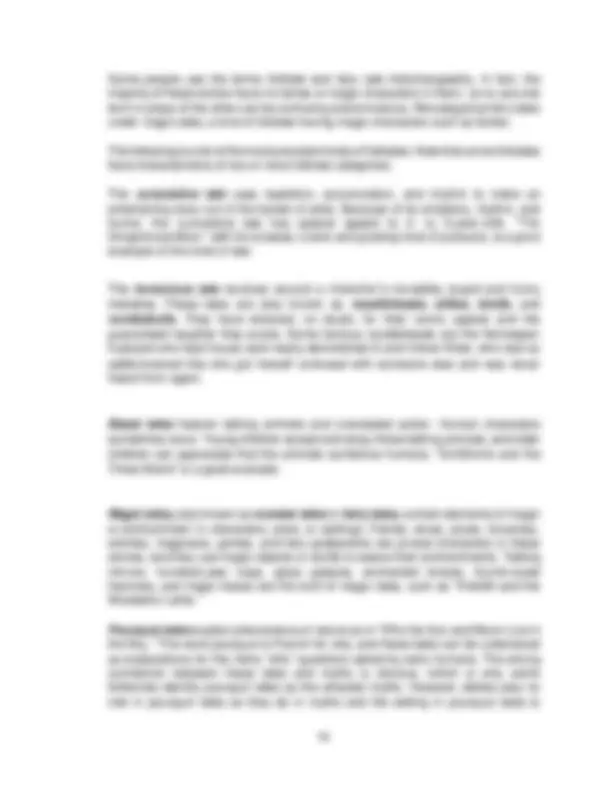
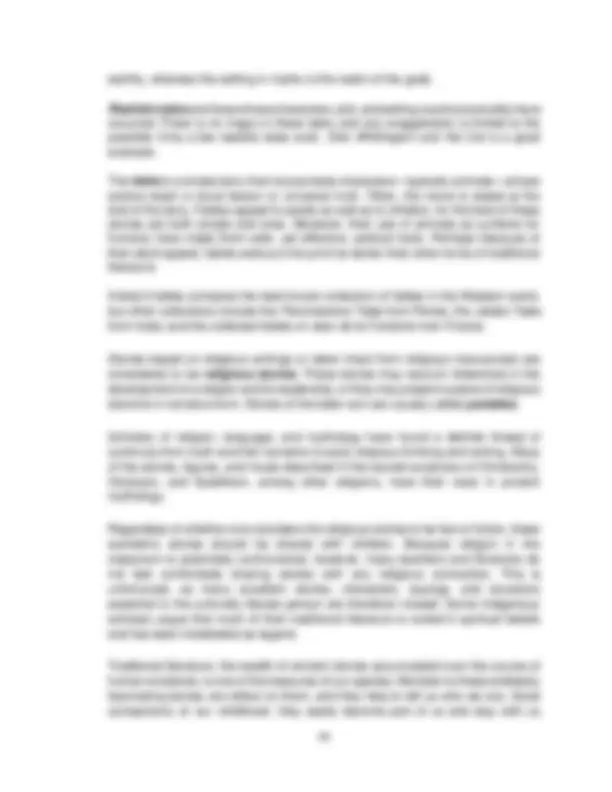
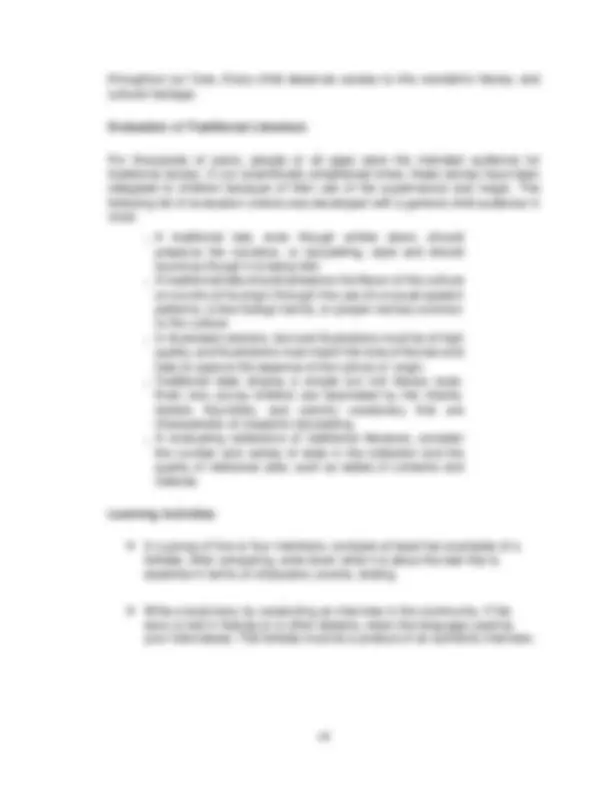

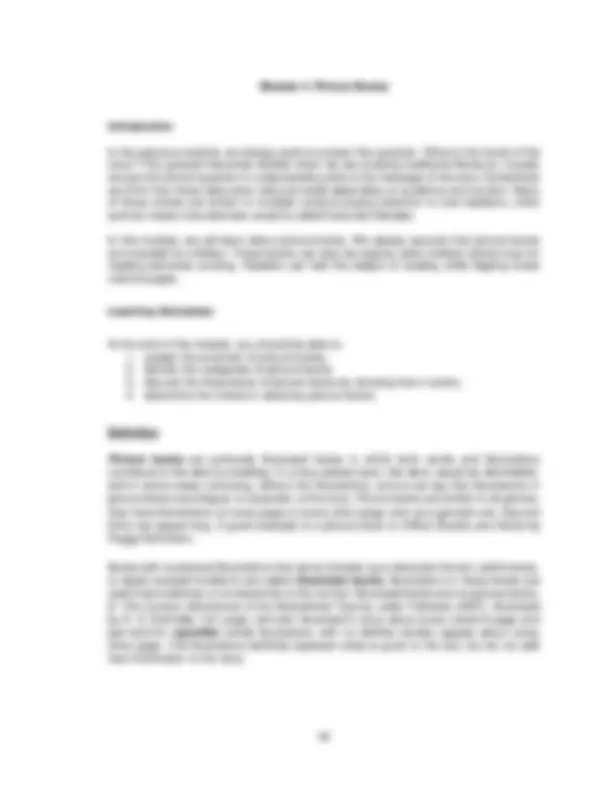

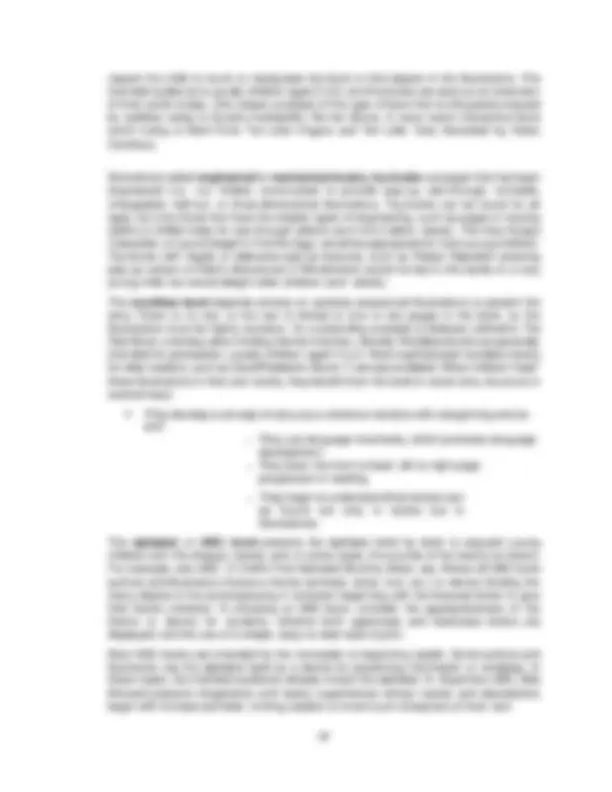
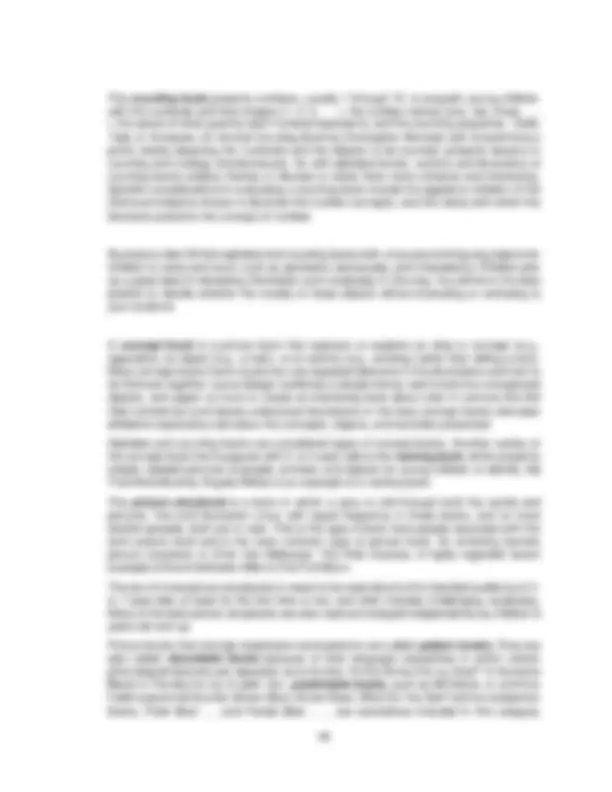
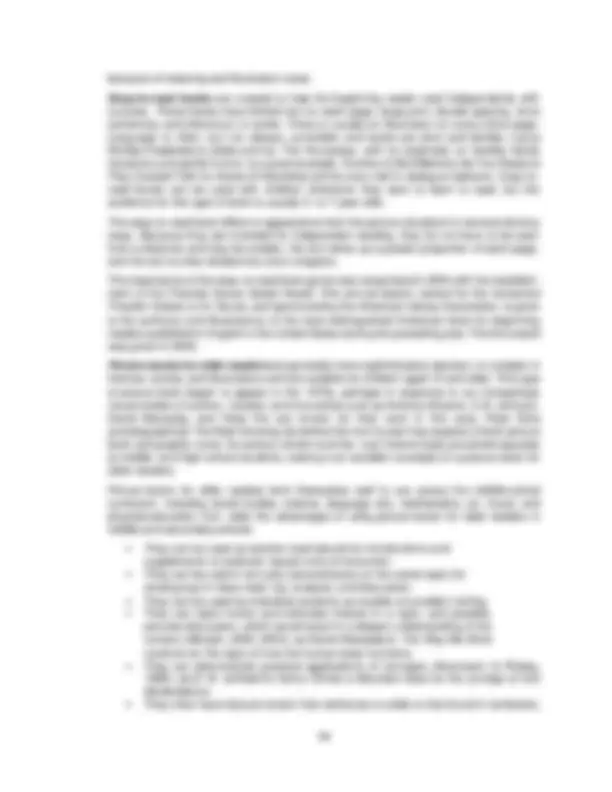
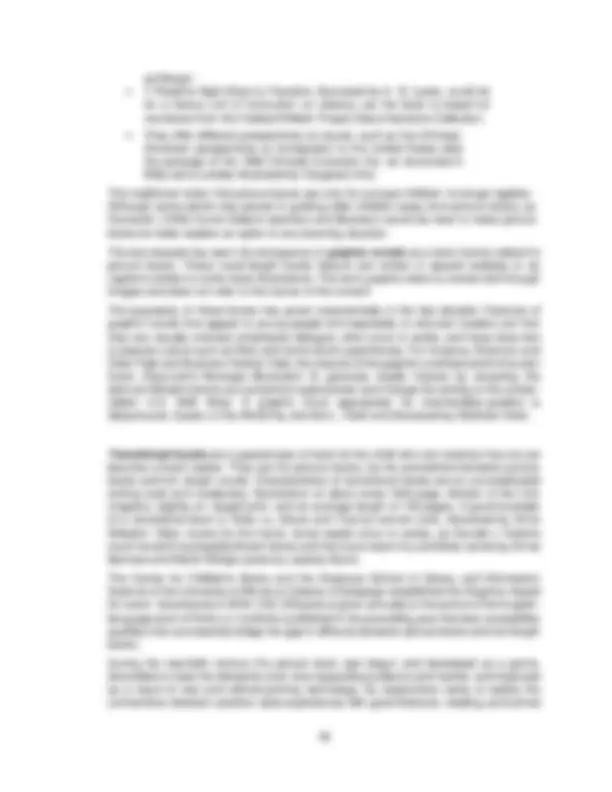
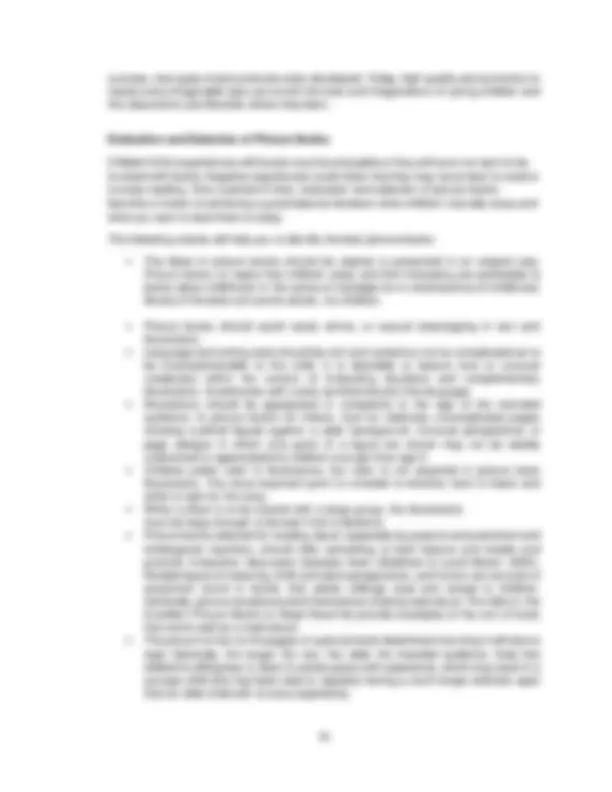
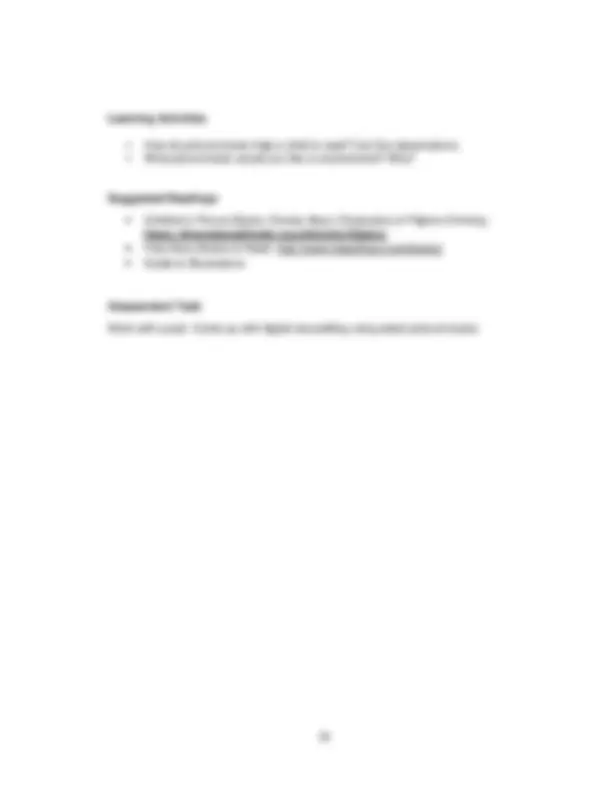

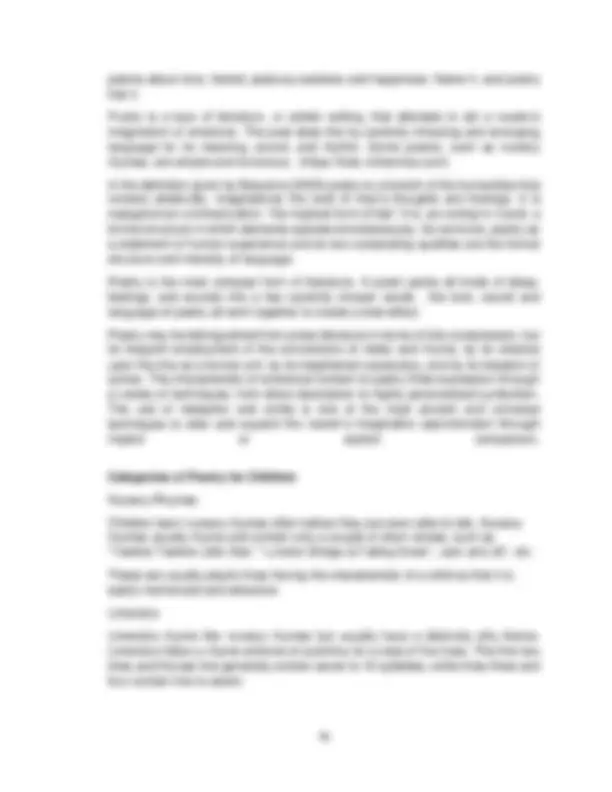

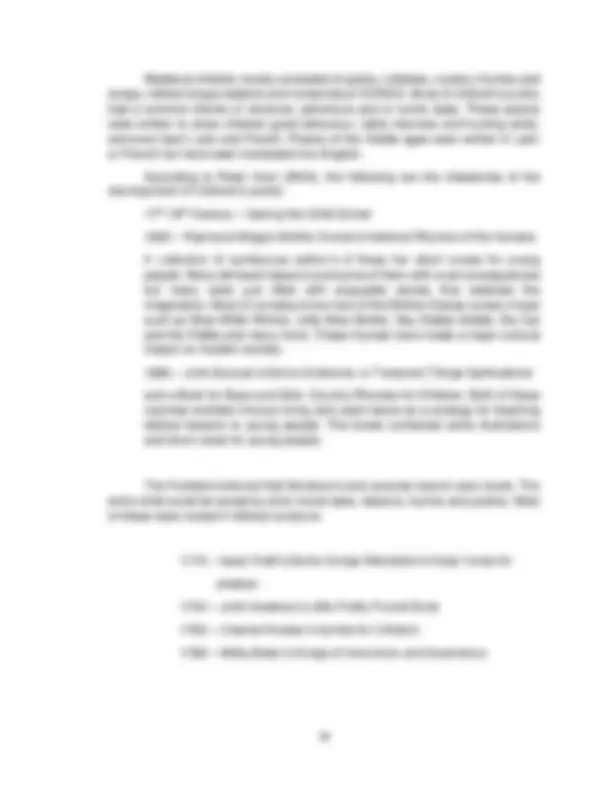
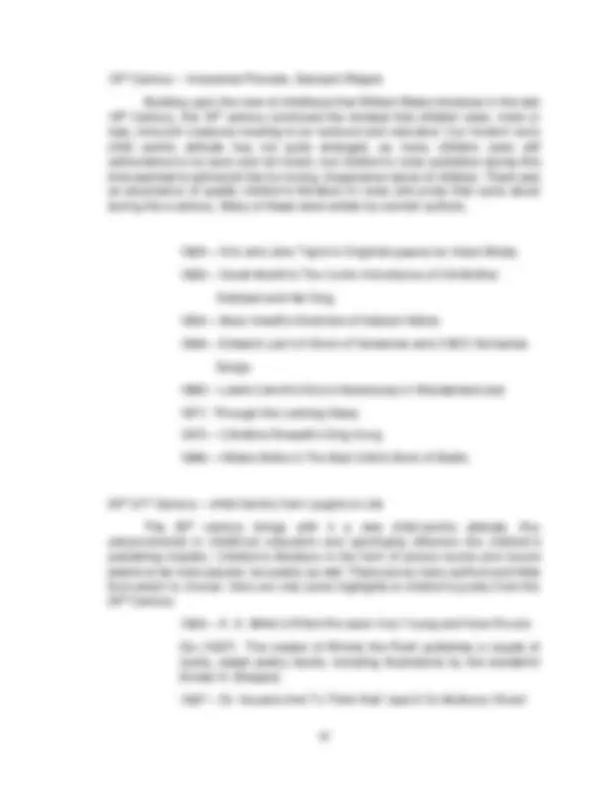
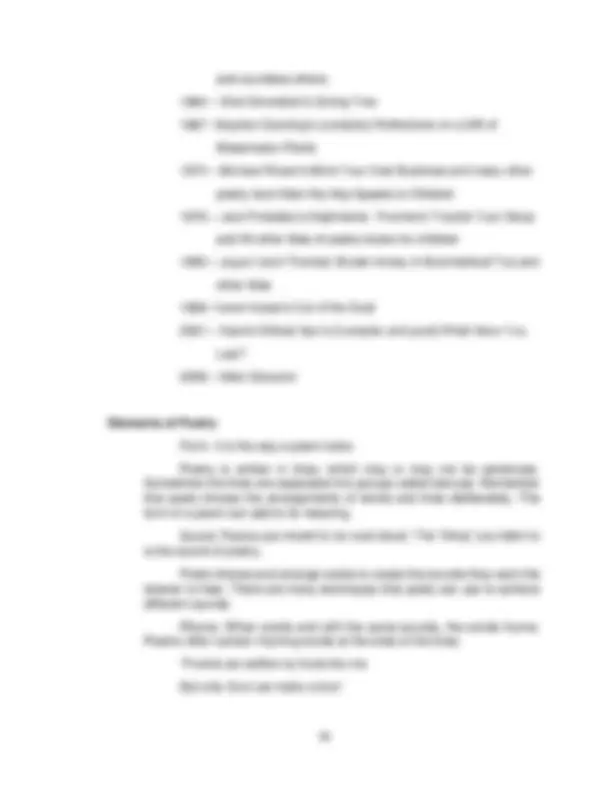
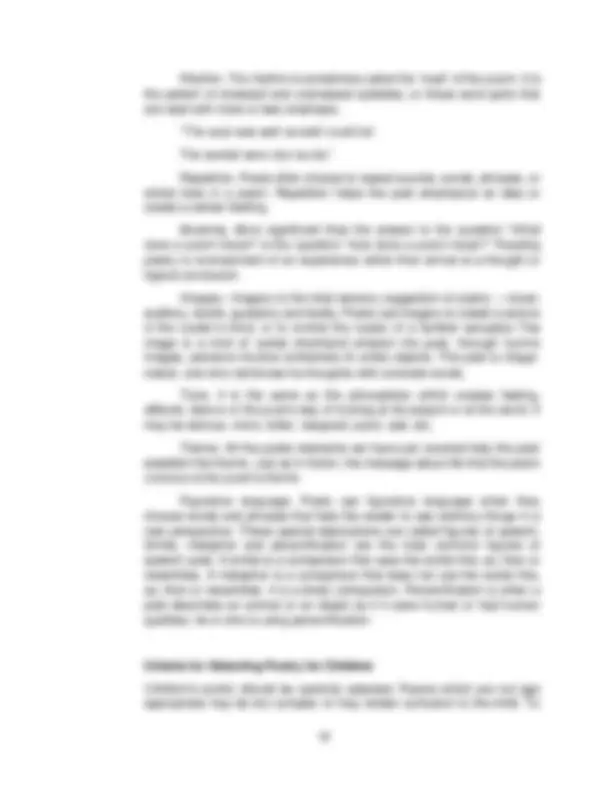
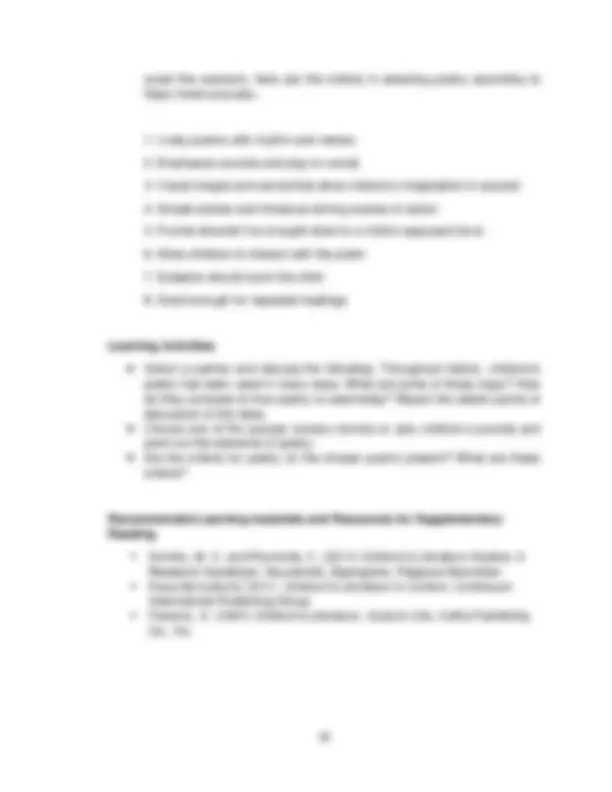
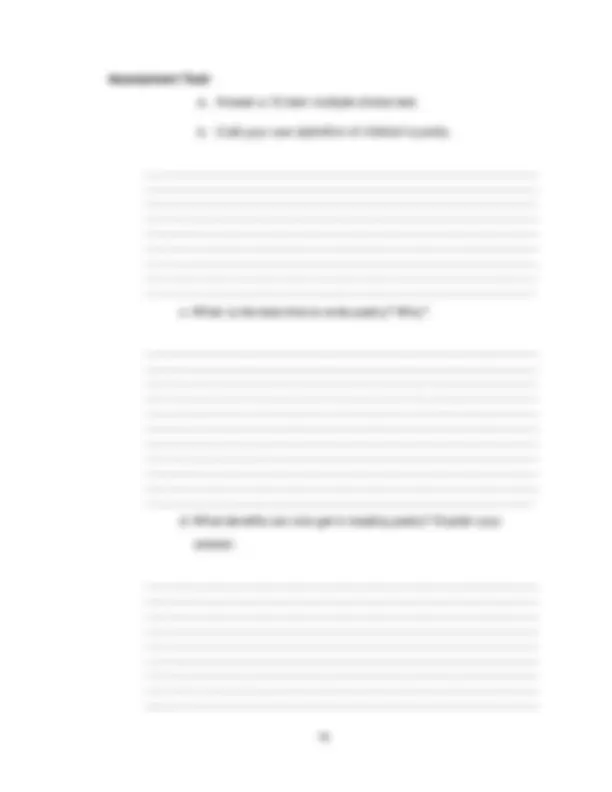
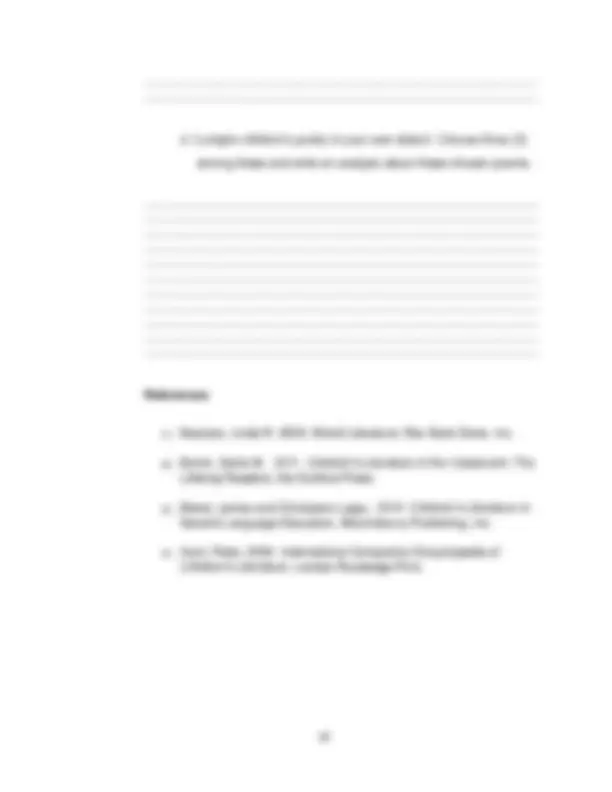
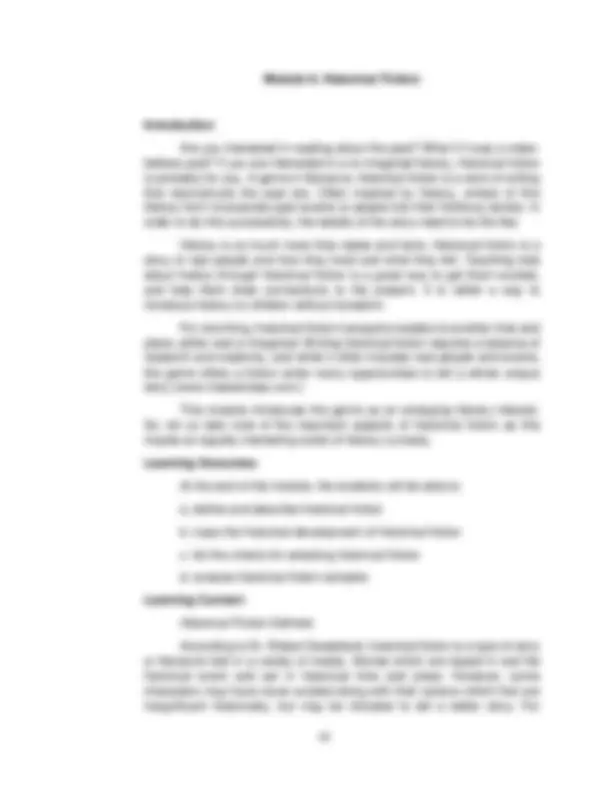

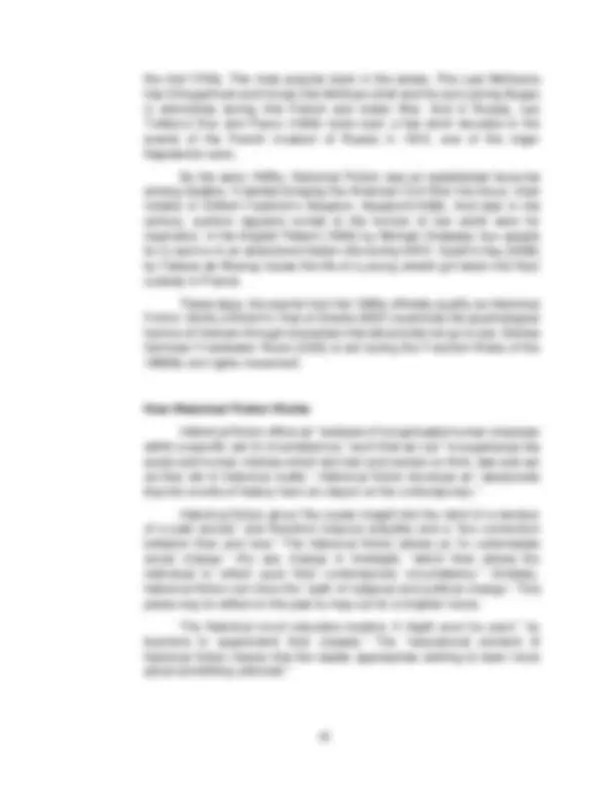
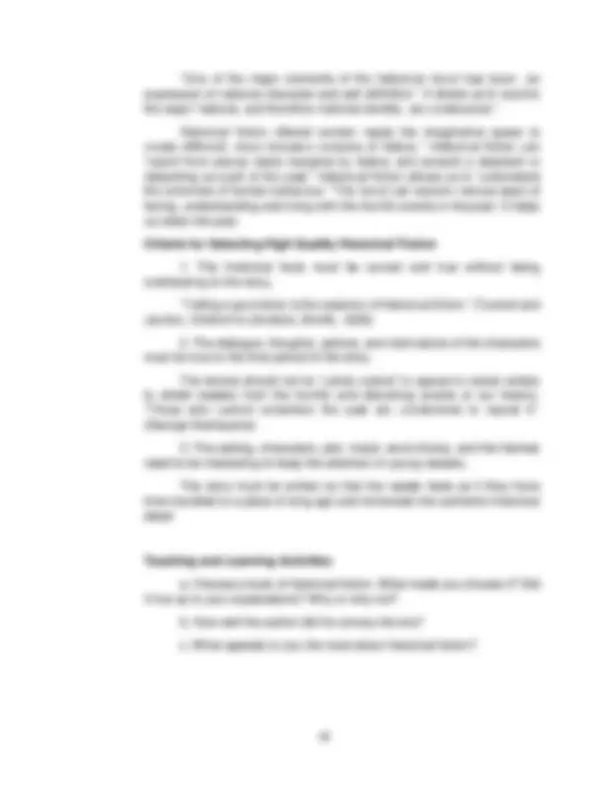
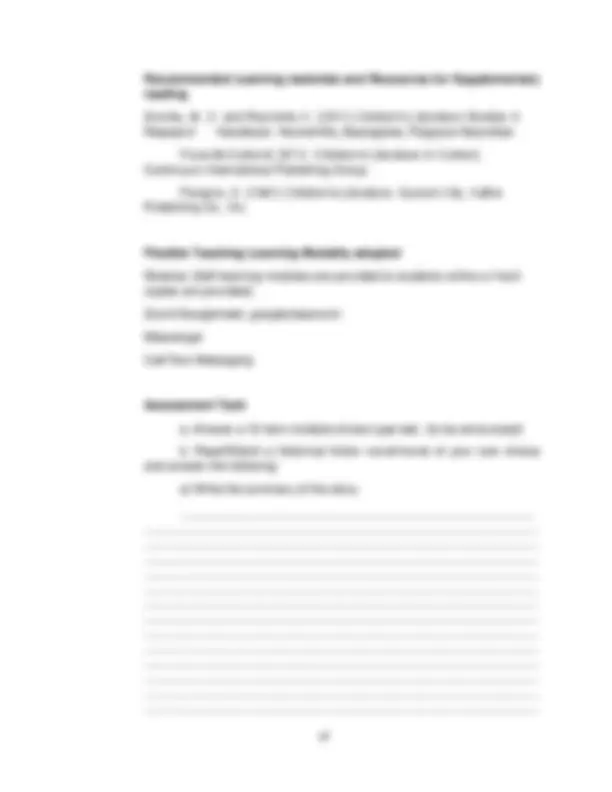
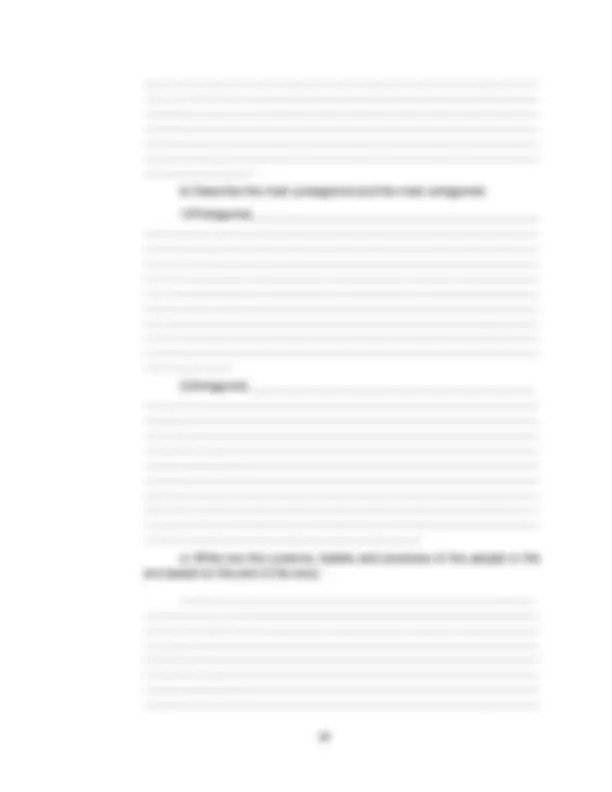
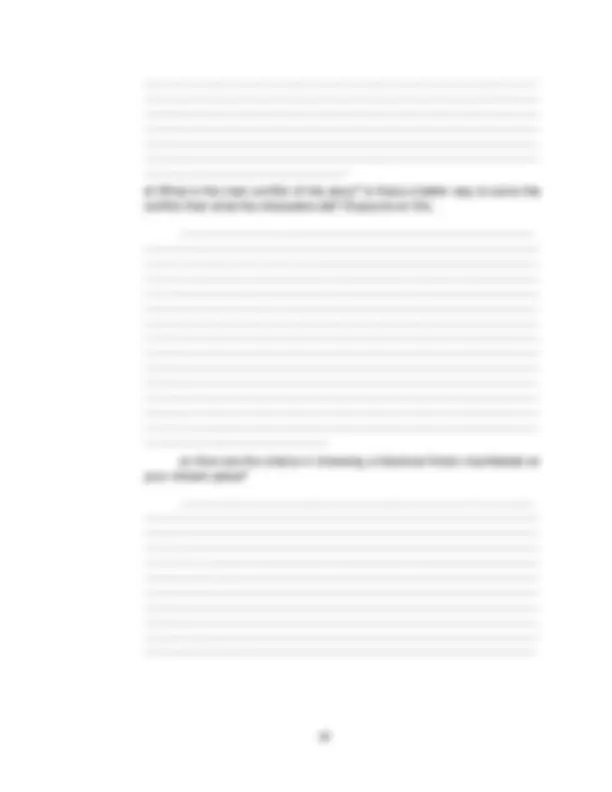
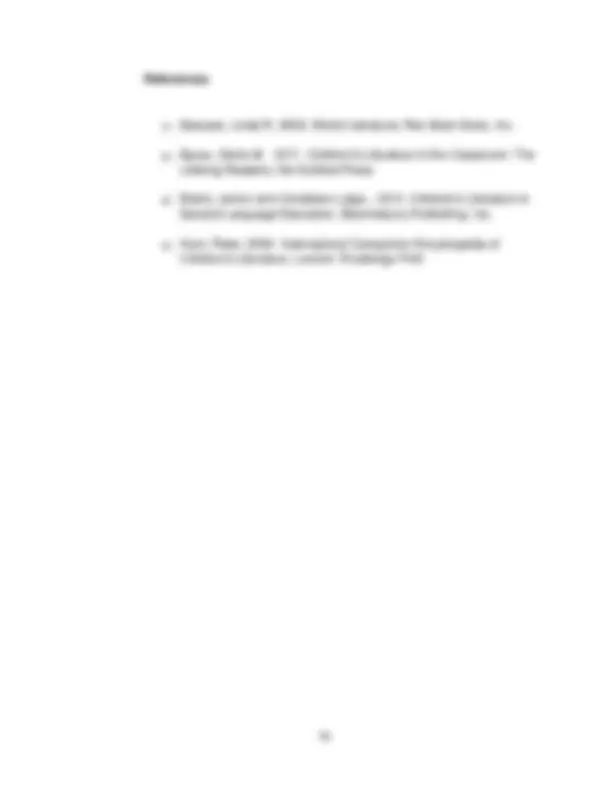
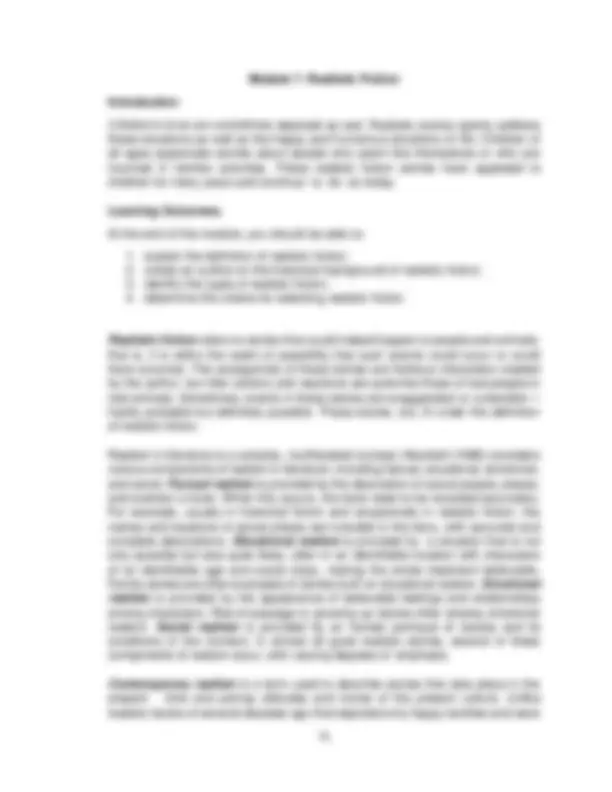
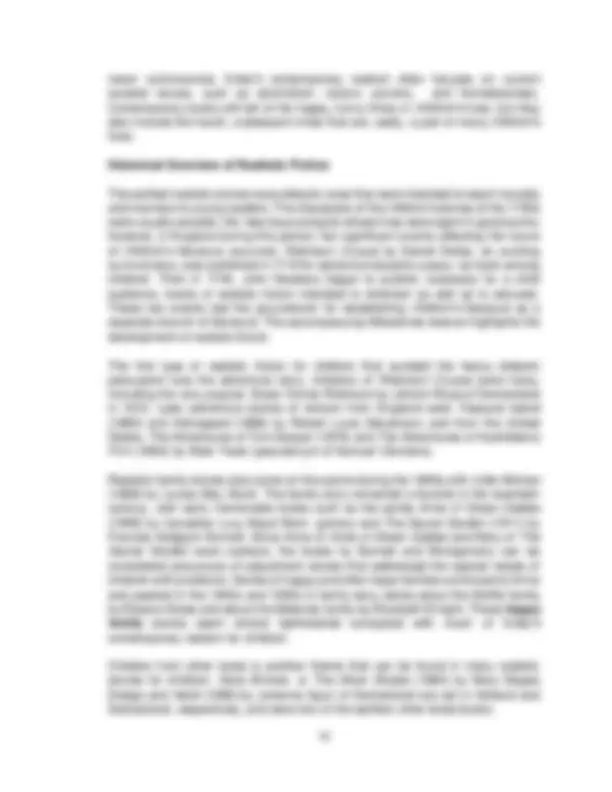
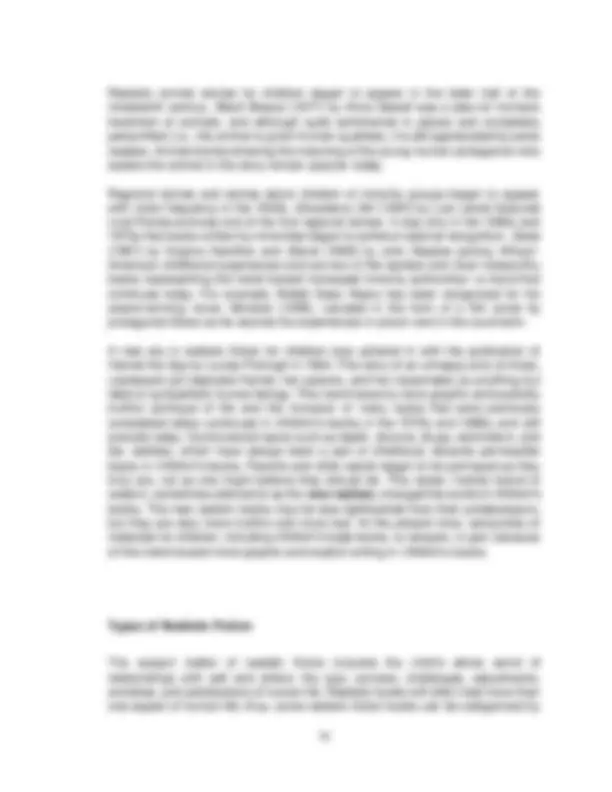
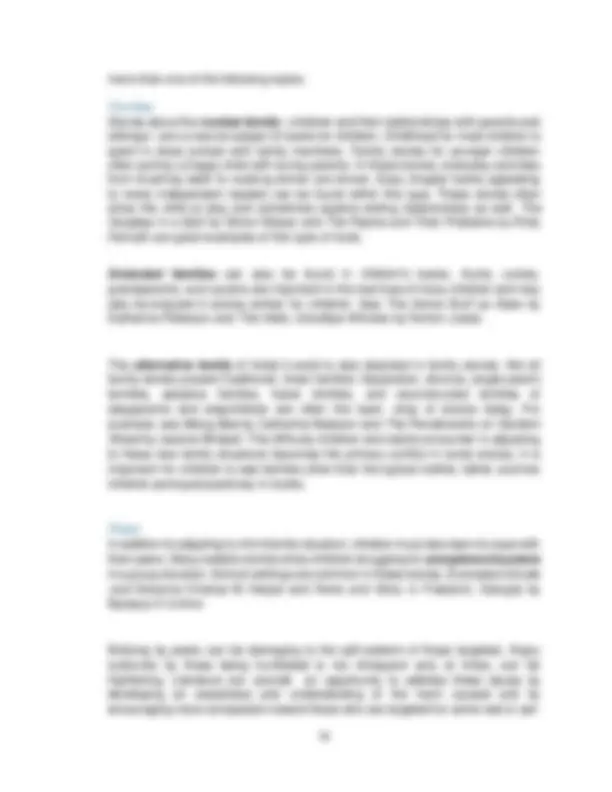
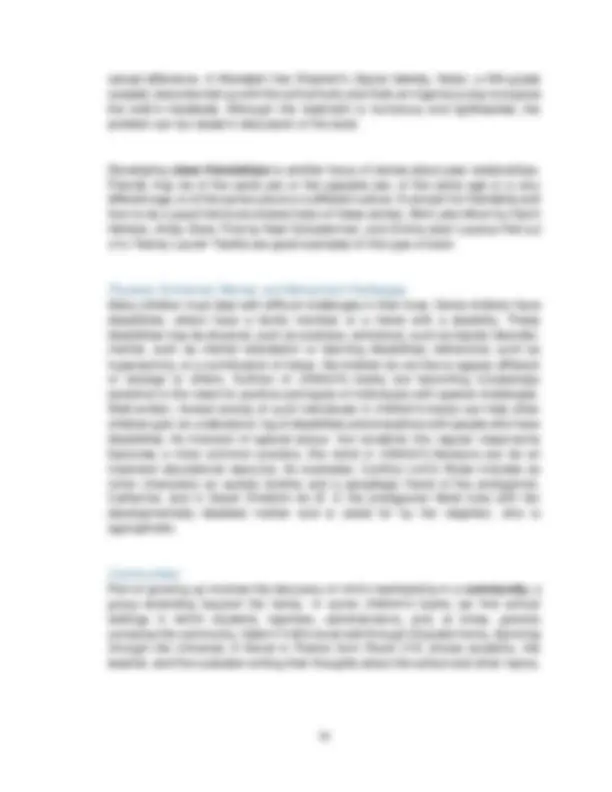
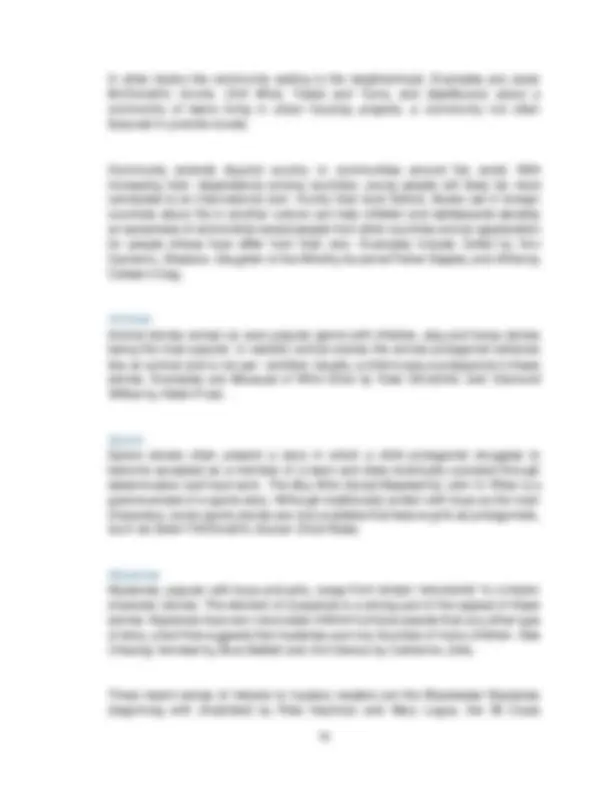
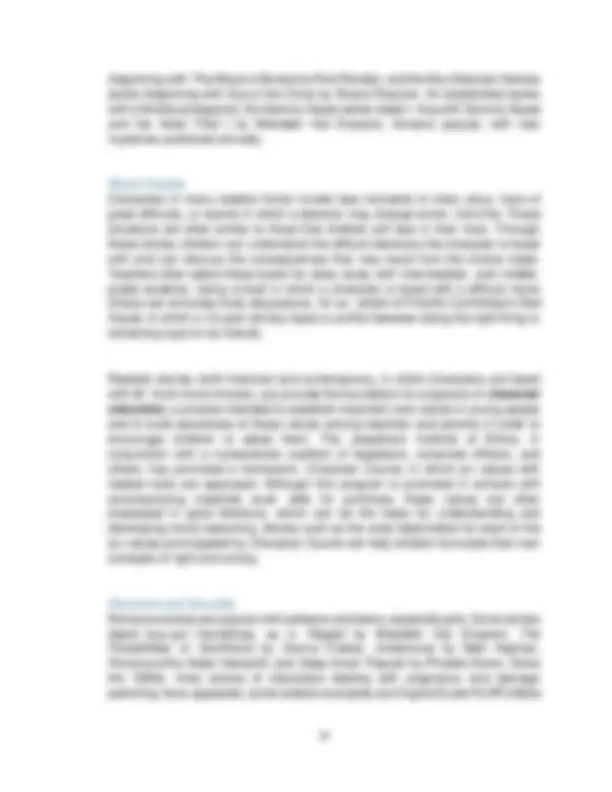
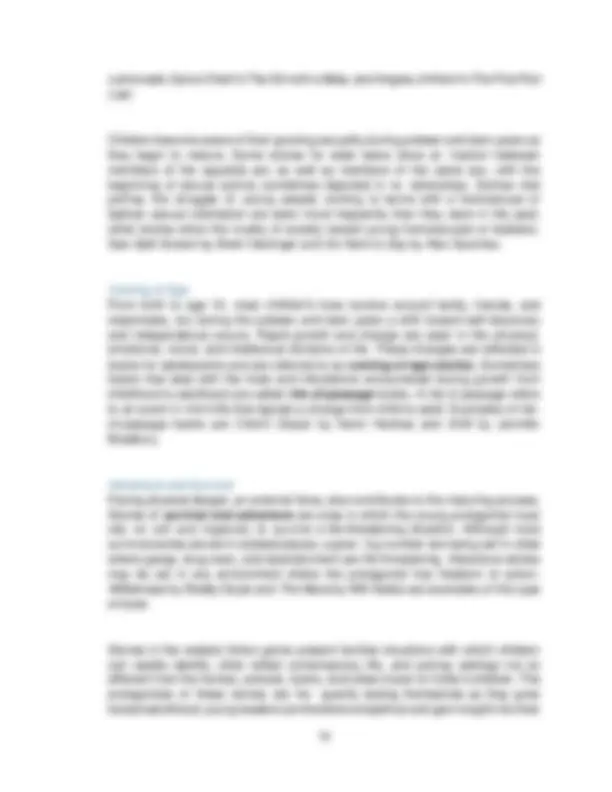
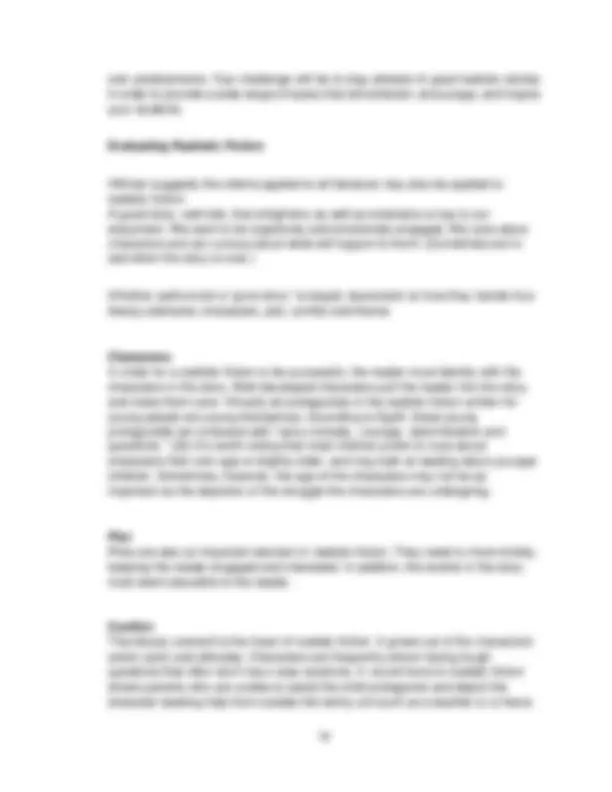
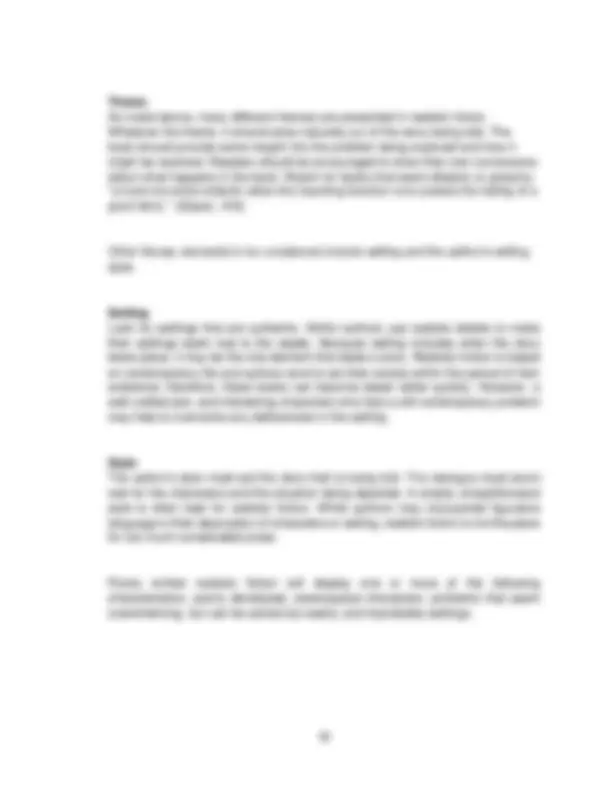
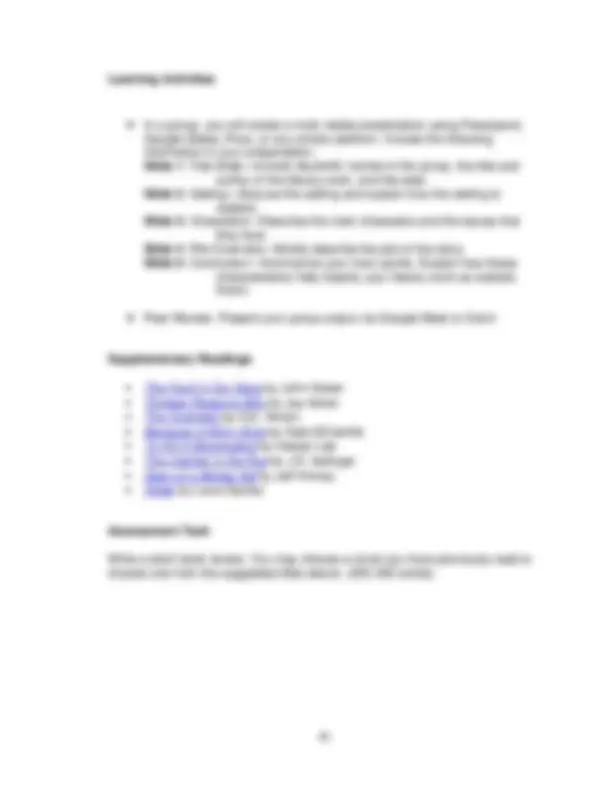
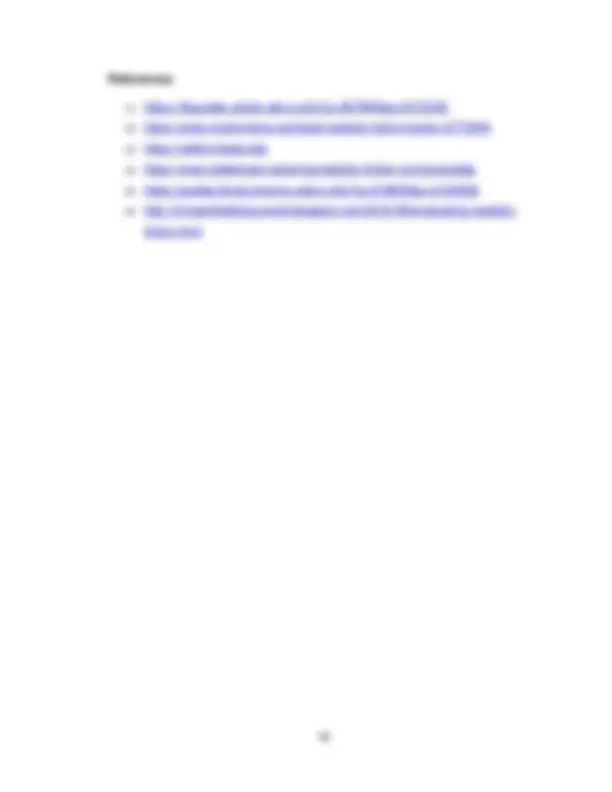
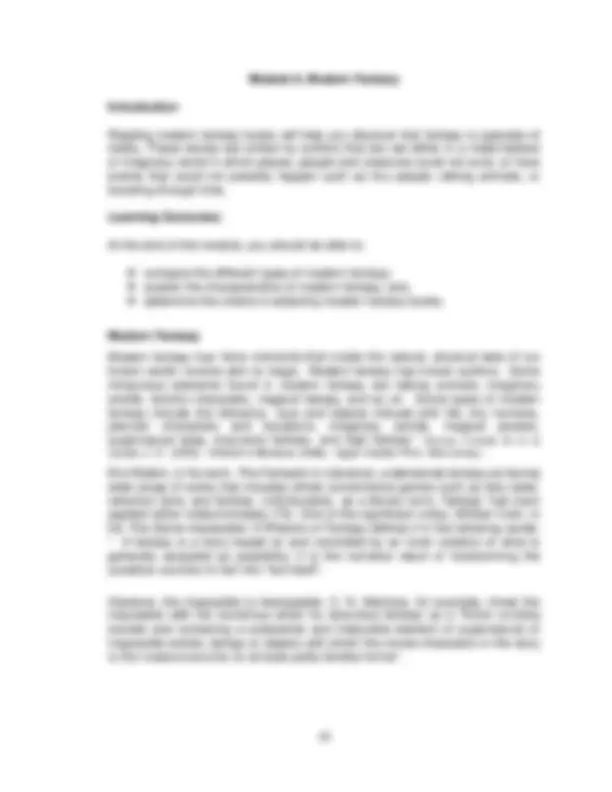
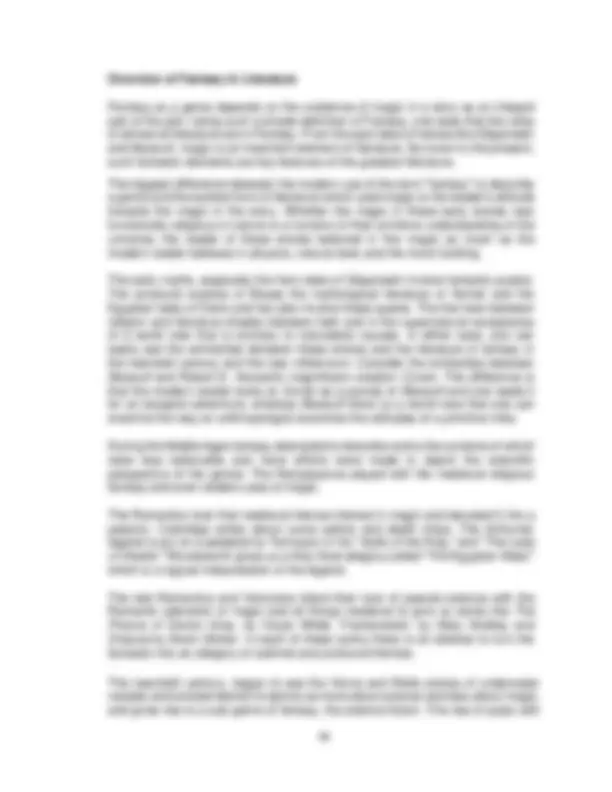
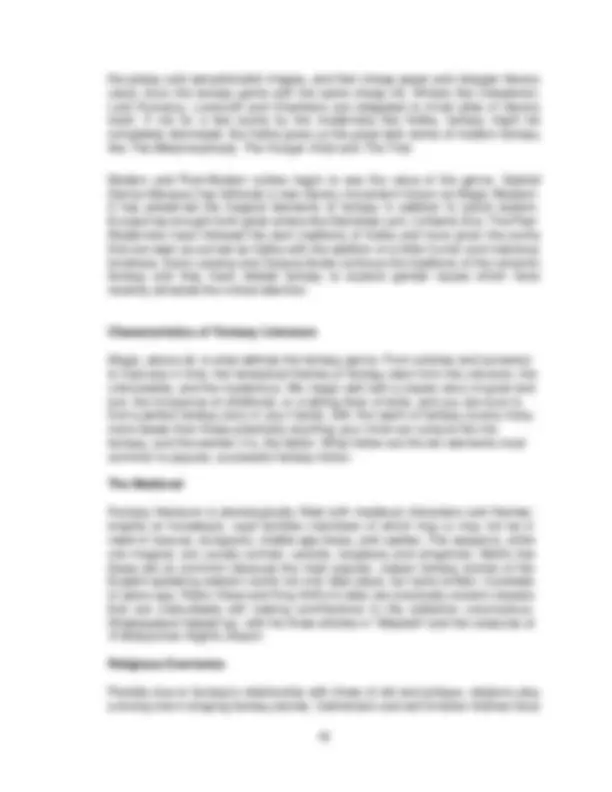


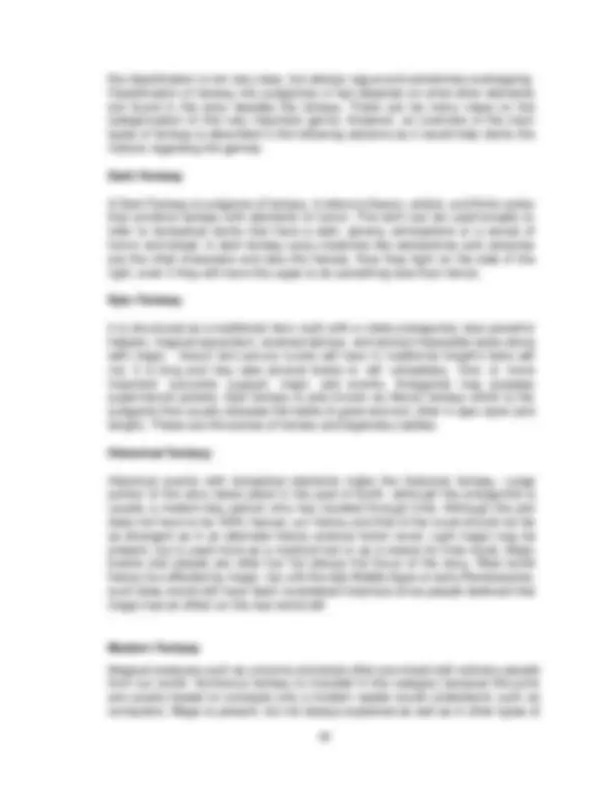

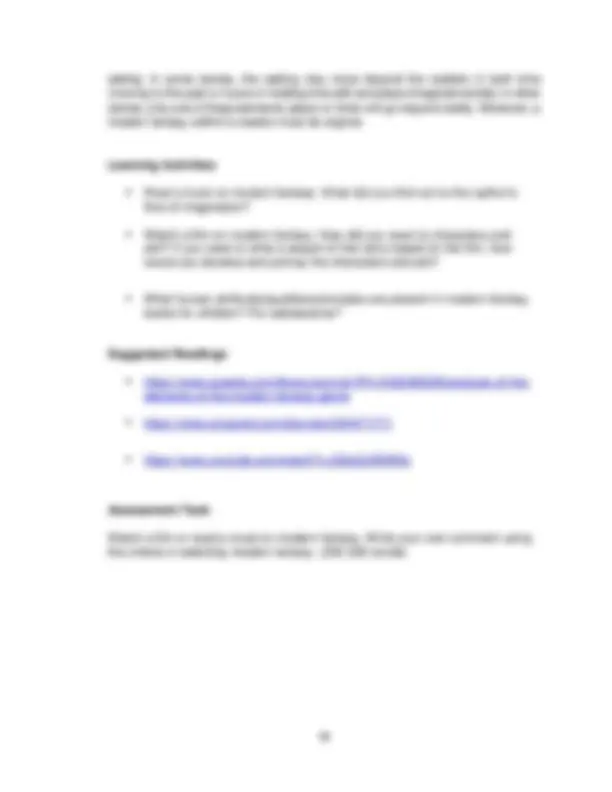
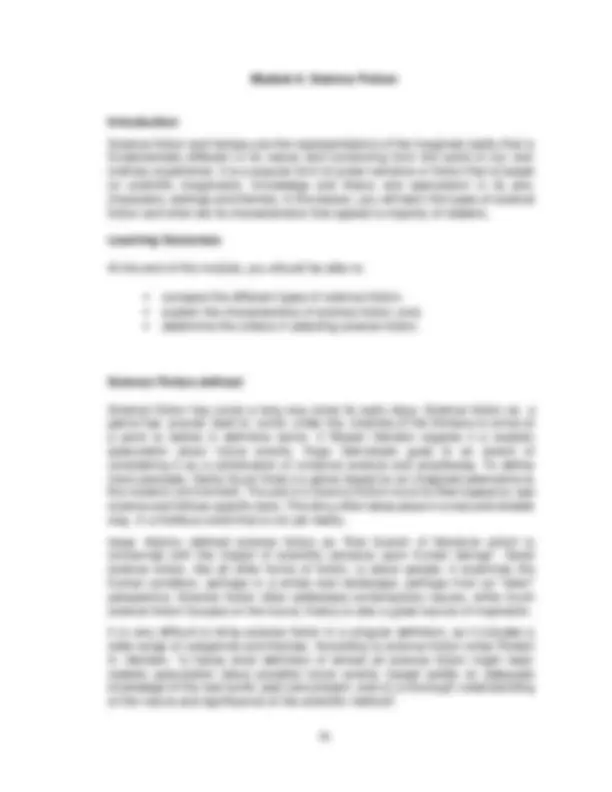
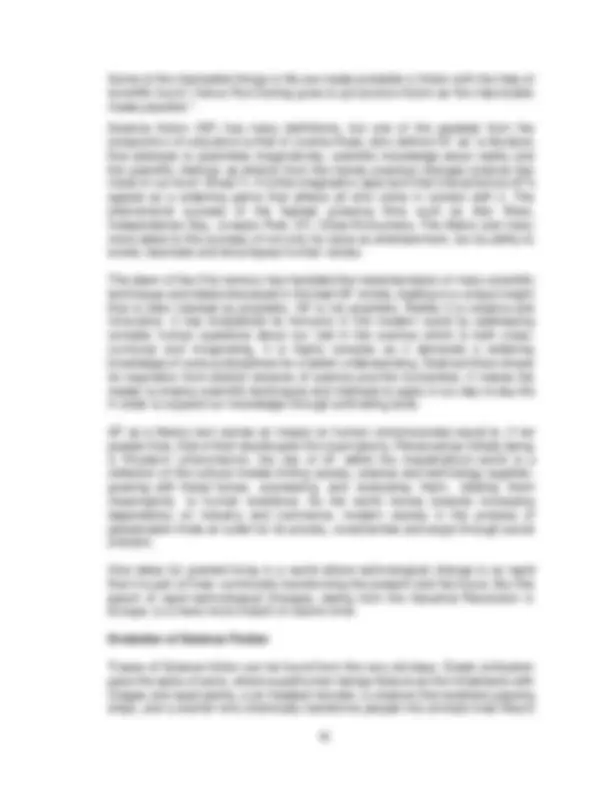
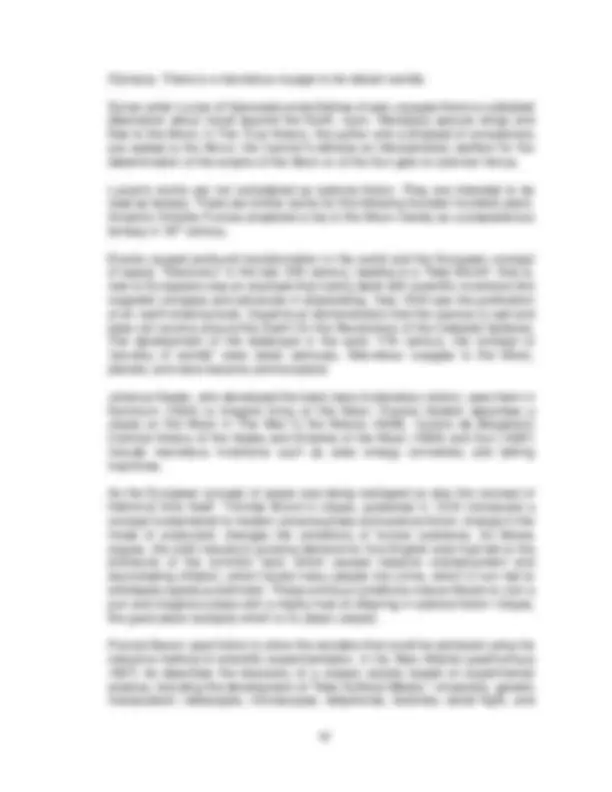

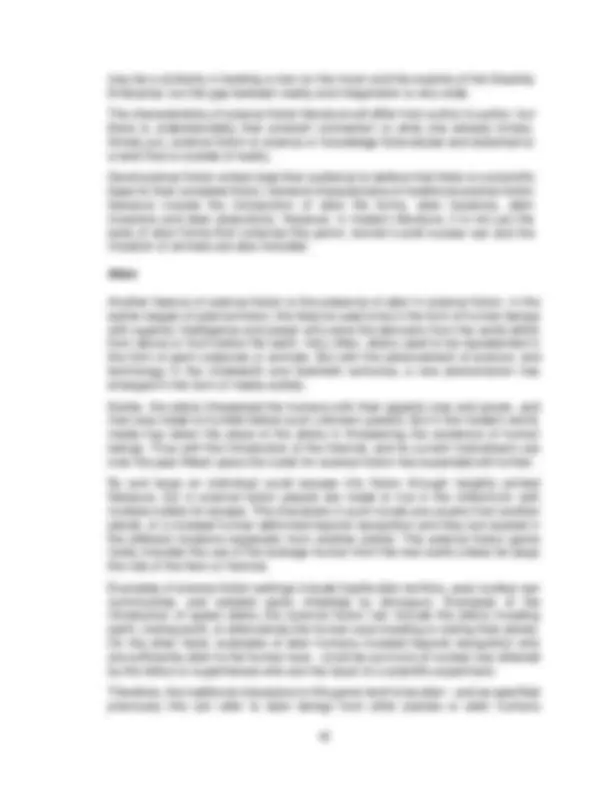

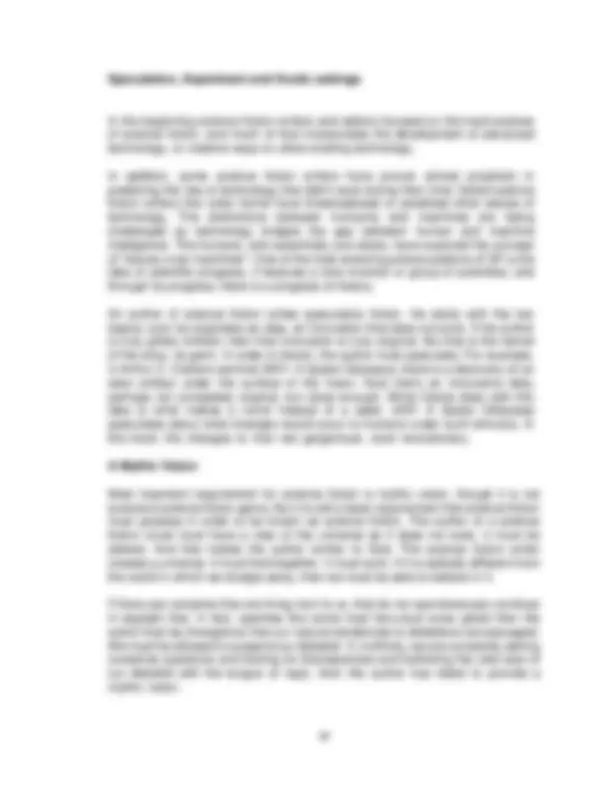
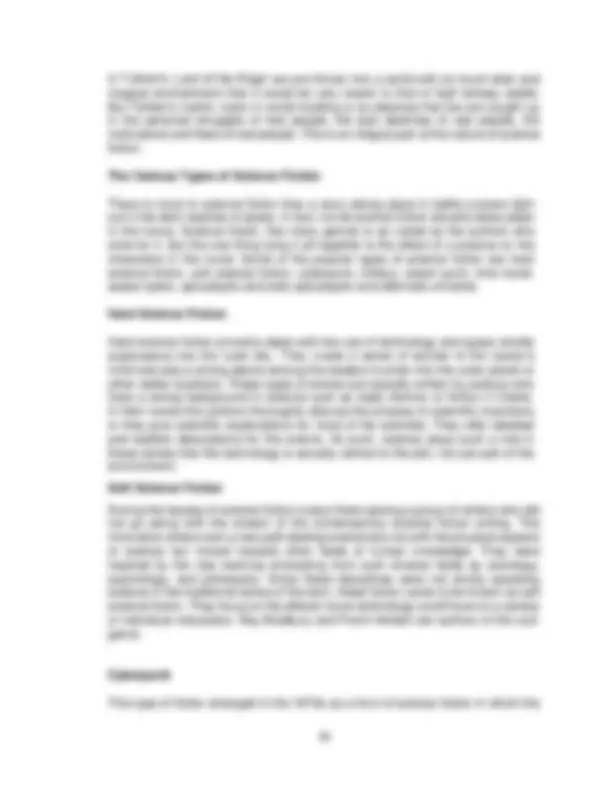
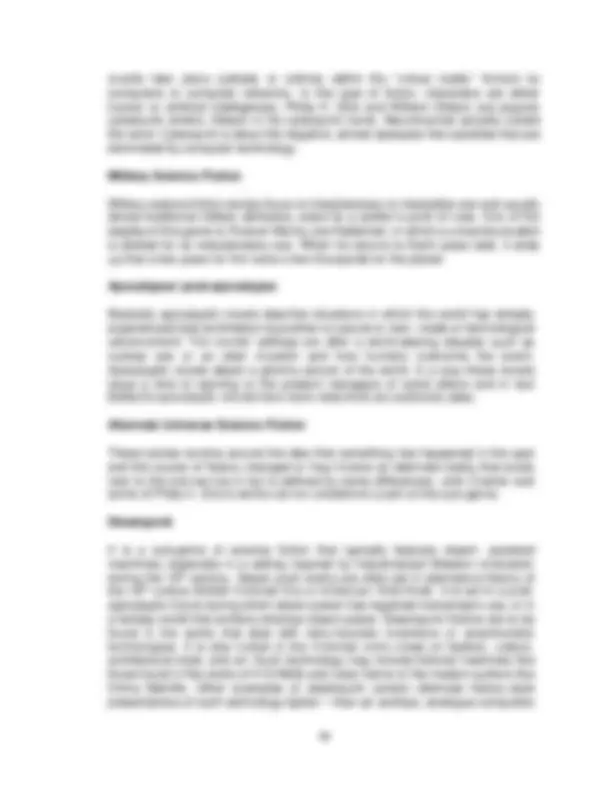
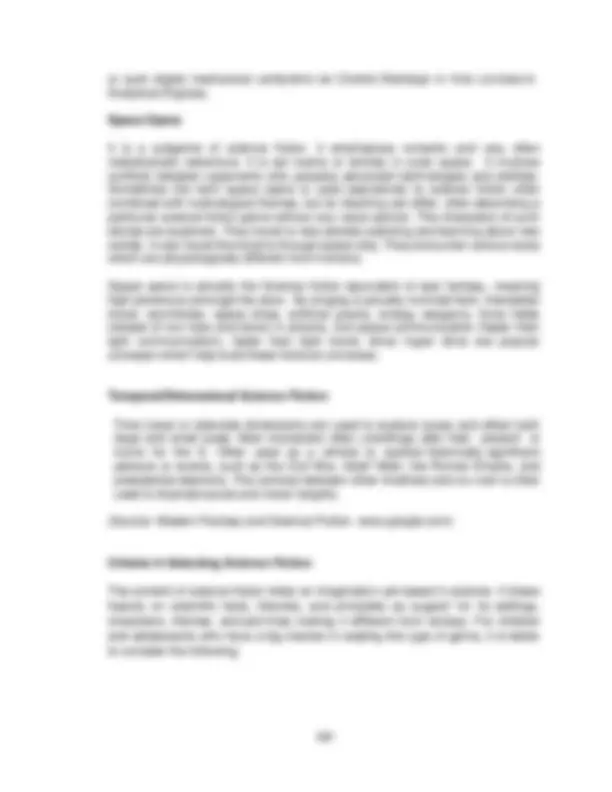


Study with the several resources on Docsity

Earn points by helping other students or get them with a premium plan


Prepare for your exams
Study with the several resources on Docsity

Earn points to download
Earn points by helping other students or get them with a premium plan
Community
Ask the community for help and clear up your study doubts
Discover the best universities in your country according to Docsity users
Free resources
Download our free guides on studying techniques, anxiety management strategies, and thesis advice from Docsity tutors
This is our module from our Instructor and Professor
Typology: Schemes and Mind Maps
1 / 124

This page cannot be seen from the preview
Don't miss anything!





























































































Module 1. Introduction to Children and Adolescent Literature Introduction This module will introduce the concept of Children and Adolescent Literature by examining the different definitions of what constitutes children and adolescent literature, its history, its purpose, how does it function, and why. This module will also focus on identifying literary works written for children and adolescent, determining the importance of these books in the identity and representations of childhood, examining key theories in children’s development and response to literature; and analyzing issues relating to the form and content of Children and Adolescent Literature. Learning Outcomes At the end of the module, the students should be able to: define children and adolescent literature; discuss the history of children and adolescent literature; characterize literary works written for children and adolescent; identify the importance of children and adolescent literature in the identity and representations of childhood; identify key theories in children’s development and response to literature; and discuss issues relating to the form and content of Children and Adolescent Literature. Children and Adolescent Literature Children and adolescent literature deals with children and adolescents' special literary texts. This kind of literature also includes a part of the popular oral culture, such as lullabies, parables, stories, as well as stories, plays and poems, as well as writings in the fields of religion, social science, science and its applications, art and entertainment. Authors and poets create for children and adolescents.
Children’s Literature It is the body of written works and accompanying illustrations produced to entertain or instruct young people. The genre encompasses a wide range of works, including acknowledged classics of world literature, picture books, and easy to read stories written exclusively for children, and fairy tales, lullabies, fables, folk songs, and other primarily orally transmitted materials. Children’s literature could be easily defined as “books for kids.” Adolescent or Young Adult Literature It is generally described as books written for an audience of 13- 18 years old. It may also include books primarily written for adults, but which have appeal to younger readers. Note: Some people consider children’s literature to span the age group of birth through 18. However, no junior high or high school students consider themselves children, therefore, literature for youth ages 13 to 18 as adolescent or young adult literature, and literature for youth from birth through age 13 is defined as children’s literature. All books written for children—excluding works such as joke books, cartoon books, and non-fiction works that are not intended to be read from front to back, such as dictionaries, encyclopedias, and other reference material. Numerous awards are given to quality children’s books; many are genre specific; some coveted awards that are not genre specific include (1) the Newbery Medal for the year’s most distinguished contribution to literature for children, (2) the Caldecott Medal for the year’s most distinguished book illustrations, (3) the Laura Ingalls Wilder Medal for an author or illustrator who has made a lasting contribution through his or her body of work, (4) the international Hans Christian Andersen Award for authors and illustrators
reading ability of children and young adults Stories are told more directly and relationship among characters are shown clearly Stories are told more directly and relationship among characters are shown clearly Stories are more complex More open to experimenting with more forms of literature than adults More open to experimenting with more forms of literature than adults Adults tend to stick to one type of literature Note: Topics for children’s literature contains experiences of childhood set in the past, present, or future (e.g., enjoying birthday parties, anticipating adulthood, getting a new pet, enduring siblings, and dealing with family situations); 2) things that are of interest to children (e.g., dinosaurs, Egyptian mummies, world records) Stories are told in a forthright, humorous, or suspenseful manner (stories that are told in nostalgic or overly sentimental terms are inappropriate); 2) stories should emphasize the hope for a better future rather than the hopelessness and utter despair of the moment. Children usually enjoy reading fast-moving, adventure-filled, and easily predictable stories. These works have won no literary prizes, but they encourage children to read independently and read more. History of Children and Adolescent Literature Since the beginning of time, adults have entertained children with stories and fables. From these folktales developed an elaborate tapestry of children's literature. Today children's literature encompasses multiple genres and appeals to readers of every age.
Oral Form of Literature Just like other forms of literature, children's literature grew from stories passed down orally from generation to generation. Irish folk tales can be traced back as early as 400 BCE, while the earliest written folk tales are arguably the Panchatantra, from India, which were written around 200 AD. The earliest version of Aesop's Fables appeared on papyrus scrolls around 400 AD. In China, storytelling reached its peak during the Song Dynasty (960- 1279 AD). Many stories from this period are still used to instruct students in China today. No such equivalent exists in Greek and Roman literature. However, the stories of Homer and other storytellers of the era would certainly have appealed to children. Emergence of Textbooks/ Instructive Texts As Europe became a cultural center of the world, instructive texts became increasingly common. These books were mostly written in Latin, with the purpose of instructing children. During the Middle Ages, few literature was written for the sole purpose of entertaining children. Hornbooks, textbooks containing basic texts like the Lord's Prayer and the alphabet, would not appear until the 1400s. Alphabet books began emerging around Russia, Italy, Denmark, and other European countries roughly a century later. Emergence of Literature for Children Literature written specifically for an audience of children began to be published on a wide scale in the seventeenth century. Most of the early books for children were didactic rather than artistic, meant to teach letter sounds and words or to improve the child's moral and spiritual life. In the mid-1700s, British publisher John Newbery (1713–1767), influenced by John Locke's ideas that children should enjoy reading, began publishing books for children's amusement.
efforts toward young readers. Today, large numbers of exceptionally talented authors have turned to younger readers for an audience and direct most, if not all, of their writings to them. Emergence of Multi- Cultural Children’s Literature Another major change in publishing for children has been the rise in multicultural children's literature. Prior to the mid-twentieth century the world depicted in children's books was largely a white world. If characters from a non- white culture appeared in children's books, they were almost always badly stereotyped. The civil rights movement alerted publishers and the reading public to the need for books that depicted the America of all children, not just a white majority. Although the percentage of children's books by and about people of color does not equate with their actual population numbers, authors of color such as Virginia Hamilton, Mildred Taylor, Alma Flor Ada, Walter Dean Myers, Gary Soto, and Laurence Yep, and illustrators such as Allen Say, Ed Young, John Steptoe, Jerry Pinkney, and Brian Pinkney have made major contributions to a more multiculturally balanced world of children's books. Not only are there larger numbers of talented writers and artists from many cultures at work for children, but the range of subject matter discussed in children's fiction has also been extended remarkably. Topics that were considered taboo only a short time ago are being presented in good taste. Young readers from ten to fourteen can read well-written fiction that deals with death, child abuse, economic deprivation, alternative lifestyles, illegitimate pregnancy, juvenile gang warfare, and rejected children. By the early twenty-first century, it had become more nearly true than ever before that children may explore life through literature.
Children’s Literature Classics 1812 The Swiss Family Robinson by Johann Wyss 1843 A Christmas Carol by Charles Dickens 1864 Journey to the Center of the Earth by Jules Verne 1865 Alice’s Adventures in Wonderland by Lewis Carroll (Charles Dodgson) 1865 Hans Brinker or the Silver Skates by Mary Mapes Dodge 1868 Little Women by Louisa May Alcott 1869 Twenty Thousand Leagues under the Sea by Jules Verne 1871 Through the Looking-Glass by Lewis Carroll (Charles Dodgson) 1872 Around the World in Eighty Days by Jules Verne 1876 The Adventures of Tom Sawyer by Mark Twain (Samuel Clemens) 1877 Black Beauty by Anna Sewell 1883 Treasure Island by Robert Louis Stevenson 1883 The Adventures of Pinocchio by Carlo Collodi (Carlo Lorenzini) 1884 Heidi by Johanna Spyri 1886 Kidnapped by Robert Louis Stevenson 1886 Little Lord Fauntleroy by Frances H. Burnett 1886 Kidnapped by Robert Louis Stevenson 1886 Little Lord Fauntleroy by Frances H. Burnett 1894 The Jungle Book by Rudyard Kipling 1900 The Wonderful Wizard of Oz by L. Frank Baum Adolescent/ Young Adult Literature Classics (including crossovers from Children’s and Adult Literature) 1387 Canterbury Tales 1477 A Book of Courtesy (the first book for young people published in English) 1484 The Fables of Aesop 1484 Le Morte d'Arthur 1719 The Life and Strange Surprising Adventures of Robinson Crusoe by
Literary Works for Children and Adolescent Early Childhood Books- books written for children birth through age 6. Concept —picture books that present numerous examples of a particular concept, such as the common colors. Alphabet —a concept book that presents letters of the alphabet. Counting —a concept book that presents the counting numbers. General — concept books that present other common concepts such as colors and opposites. Pattern books —predictable books that contain repetitive words, phrases, questions, or structure. Wordless books — books in which the story is revealed through a sequence of illustrations with no—or very few—words. Traditional Literature- stories, songs, and rhymes with unknown authorship that were passed down orally through generations. Myths —traditional religious stories that provide explanations for natural phenomena, usually containing deities as characters. Fables —very brief traditional stories that teach a lesson about behavior, usually with animal characters. Ballads —traditional stories that were sung as narrative poems.
Legends —traditional stories that combine history and myth, based in part on real people or historical events (e.g., Joan of Arc). Tall tales —exaggerated stories with gigantic, extravagant, and flamboyant characters. Fairy tales —traditional stories written for entertainment, usually with magic and fantastical characters. Traditional rhymes —traditional verses intended for very young children. Fiction- literary works designed to entertain; the content being produced by the imagination of an identifiable author(s). Fantasy — fiction story with highly fanciful or supernatural elements that would be impossible in real life. Animal fantasy —fantasy in which the main characters are anthropomorphic animals that display human characteristics. Contemporary realistic fiction — fictional story set in modern times with events that could possibly occur. Historical fiction — realistic story in a real world setting in the historical past with events that are partly historical but largely imaginative. Biography and Autobiography- non- fiction works describing the life (or part of the life) of a real individual. Informational Books- trade books with the primary purpose of informing the reader by providing an in-depth explanation of factual material. Poetry and Verse- verse in which word images are selected and expressed to create strong, often beautiful, impressions. Importance of Children and Adolescent Literature (Kiefer, 2020) Literature serves children in four major ways:
1. It helps them to understand themselves When children read fiction, narrative poetry, or biography, they often assume the role of one of the characters. Through that character's thoughts, words, and actions the child develops insight into his or her own character and
cultural heritage moral reasoning literary and artistic preferences Academic Value improving reading skills developing writing voice and style learning content-area knowledge promoting art appreciation 4.5 Children's Development and Response to Literature Age Period of Development Reading/ Learning Activities 0 to 2 Sensorimotor Period nursery rhymes for reading aloud brief, plotless, concept books with brightly colored pictures interactive books (e.g. touching and opening little doors) often in the form of heavy, nontoxic cardboard or cloth books 2 to 4 Pre- Conceptual Stage simple-plot picture storybooks and folktales for reading aloud nursery rhymes for them to memorize concept books including numbers, letters, and more complex concepts like opposites (e.g. counting books, word books, and illustrated dictionaries)
4 to 7 Beginning Readers Intuitive Stage easy-to-read picture storybooks, folktales, and rhymes for reading aloud, storytelling, and “play-reading” informational books for beginning readers that help children find out about the world and how it works they begin to understand the notion of stories, letter-sound relationship, left-to-right and top-to- bottom progression of print on the page, and a slight vocabulary 7 to 9 Transitional Readers Period of Concrete Operations longer picture books and short chapter books with simple, straightforward plots and writing styles their interest in folktales begin to fall off by age 8; they show more interest in realistic stories and adventures of young characters 9 to 12 Competent Readers sophisticated picture storybooks and novels (chapter books) with more complicated plots, including realistic fiction (survival stories, peer stories, animal stories, mysteries, and romances), historical fiction, and science fiction series books containing similar topics, recurring characters, and formulaic patterns of plots Children’s literature is very valuable in both the school setting and at home. Teachers and parents should both be able to differentiate between quality and mediocre literature, in order to give students access to the best books to encourage these important values of literature and considering developmental domains. Children’s literature is valuable in providing an opportunity to respond to literature, as well as cultural knowledge, emotional intelligence and creativity, social and personality development, and literature history to students across
Minority Rights Checklist for Assessing Children's Literature In choosing early childhood children’s literature, the following criteria should be considered: STORY Are the stories interesting to children? Are there various conflicts for children to explore? How are the conflicts resolved? CHARACTERS Do characters represent people from a variety of cultural groups? Do "good" characters reflect a variety of backgrounds? Are females as well as males depicted in leadership roles? THEMES Does the story offer children a variety of things to think about, to question, and to consider? Are values being explored instead of preached? Are there lessons to be learned? SETTINGS Do the stories reflect a variety of settings? Are urban, suburban and rural settings represented realistically? Are cultural settings represented realistically? ILLUSTRATIONS Are diverse populations represented? Is there diversity represented within cultural groups? Are characters realistically and genuinely represented? Do the illustrations avoid reinforcing societal stereotypes?
Will the stories encourage discussions? Are children exposed to multiple perspectives and values? Do the stories promote understanding of our diverse society? Are the stories age appropriate to ensure children can understand what is presented? While every children’s book cannot possibly meet all the standard of excellence, in many instances, the value of a particular book will outweigh those aspects that might be questionable or problematic. Teachers and parents should examine children and adolescent books for such things as historical accuracy, realistic life styles, believable characters, authentic language and ensure the book is age appropriate. The books chosen should also represent a variety of settings, problem - solving approaches and themes, and should provide opportunities for children to consider multiple perspectives and values. Multicultural children’s books should not speak to a limited group of children; they should speak to all children. Note: The age level for which a book is intended does not guarantee that someone will not try to censor it. Though the emphasis seems to be on challenges to children's and young adult (YA) books some years more than others, attempts are also continually mounted to restrict access to certain adult books, often books that are taught in high school. Most complaints are made by parents and are directed to public libraries and schools.
Criteria Description Score Quality of Writing The piece was written in an extraordinary style and voice
The essay is highly informative and well-organized 30 Grammar, Usage & Mechanics Virtually no spelling, punctuation, or grammatical errors 40 Total 100%
Test Your Skills 3. Read the fairy tale “Jack and the Beanstalk” and analyze the appropriateness of the literary piece by checking the criteria in choosing children and adolescent literature. Visit this website for the copy of the story. https://www.dltk-teach.com/rhymes/beanstalk/story.htm) Criteria YES NO STORY Are the stories interesting to children? Are there various conflicts for children to explore? How are the conflicts resolved? CHARACTERS Do characters represent people from a variety of cultural groups? Do "good" characters reflect a variety of backgrounds? Are females as well as males depicted in leadership roles? THEMES Does the story offer children a variety of things to think about, to question, and to consider? Are values being explored instead of preached? Are there lessons to be learned? SETTINGS Do the stories reflect a variety of settings? Are urban, suburban and rural settings represented realistically? Are cultural settings represented realistically? ILLUSTRATIONS Are diverse populations represented?